The Walnut Street Journal.
Thoughts on Leadership
v.2021.11.07

Courage, Compassion and Service – Oh My!

0.0 INTRODUCTION
Let’s start at the very beginning, a very good place to start.
All Glory to God
Thank you, Lord
And thank you to my family, friends, mentors, and to the extraordinary human beings referenced in this work who have inspired me, and who I continue to learn from, on this journey.
I’ve been in leadership roles for almost the entirety of my 30+ year career. I’m not completely sure of why I’ve found myself in leadership roles, but I have been very fortunate that people have deemed me trustworthy and have put their faith in me to provide support and guidance as a leader in various endeavors. This began in the early 1990s when I was a young lawyer working at a large law firm, and senior lawyers – partners – trusted me to lead particular projects and supervise and mentor newly minted lawyers joining the firm. Fast forward to my 20+ year career in leadership as a Head Start Director, where I was also selected by my peers to lead the Vermont Head Start Association as Chair for more than two decades, and my service in regional and national capacities to support the development of early care and education systems for young children and their families.
Although I’m not a leadership scholar or researcher, over the past many years I’ve been fascinated with the somewhat amorphous concept of leadership, and the attributes that, in my view, inform and support great leadership. As my thinking began to evolve on this topic, I began to formulate a framework or matrix of concepts to describe these elements. I have drawn on many different sources in this work, and I try to be transparent in giving credit to those who have had seminal thinking or work on various aspects that I highlight. What I consider my contribution is an effort to synthesize and organize a lot of this work into what I hope is a coherent and actionable matrix to support all of us in our journey of self-actualization and leadership, as I believe that, at our core, we’re all leaders and the world needs us.
As I draw upon and reference the work of many great thinkers and leaders, I weave in anecdotes, experiences and perceptions from my own life and work. I know that some folks enjoy this sort of personalized narrative in this kind of work, while others do not. But, I do love storytellers and a good story here and there and, hey, I do call it a “Journal,” after all.
As I’ve pulled together and refined this content, and presented it in local and national venues, several folks close to me suggested that I write a book, which I did consider. However, I quickly realized that putting the content in a book would essentially be just a momentary snapshot of work that I prefer to continue to develop over time. Each day, I have new insights and conversations, and come across new sources and realizations that I’d like to include in my content, and I also like to occasionally edit and reformulate the content for better accuracy and clarity. It is an iterative work and I welcome feedback in this process. So, I decided that I would put this content on a website where I can continuously update it, and where folks can always go, for free, to see the latest iteration of the content. So, this is the quintessential, “work-in-progress” (and aren’t we all?), and I hope that folks find it useful for our work in bettering ourselves, and in supporting the well-being of humanity and our planet.
0.1 HOPE FOR A SHARED MISSION
My leadership mission is to make this world a better place.
I hope that this is the guiding mission for all of us, and especially for those in formal leadership positions. In order to make the world a better place, we need to:
- Support and promote the well-being of humanity; and
- Support and promote the well-being of our planet, its ecosystems and environments, and living things.
This is a humanitarian and ecological mission of love and peace.
The Prime Directive is COMPASSION.
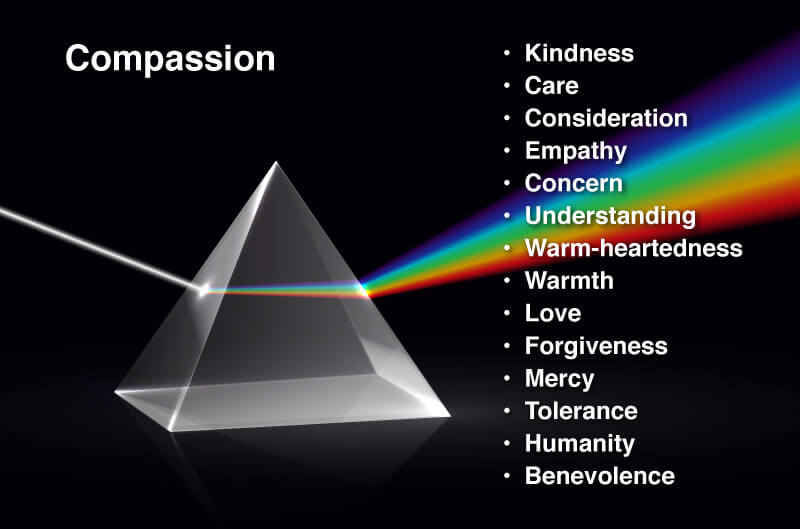
0.2 THE LEADERSHIP FUNCTION: SUPPORT AND SHINE A LIGHT

In order to make the world a better place, we have to provide leadership. My view is that leadership is not limited to formal positions of leadership, but that we’re all leaders in various capacities in our lives and can all contribute to making the world a better place.
Several years ago, in my capacity as the Director of a Head Start program, I realized that I had individual, monthly meetings with the 11 people that I supervised directly, but rarely did I have the opportunity to meet one-on-one with the other 60+ employees in our program. And so, I implemented a practice of having annual, individual meetings (AIM, as in, “My aim is true…”) with each employee. The purpose of these meetings was primarily to listen to my staff and learn about the successes and challenges of the work, and to create space for folks to ask me questions and have one-on-one discussions. I would always let folks know that it was their meeting, and that I wanted to listen and discuss what they wanted to discuss. The meetings were also an opportunity to get to know each other and talk about our lives, and to build relationships.
Each year, toward the end of the AIM meetings, I had an “annual question,” which varied year to year, that we would discuss if we had some time remaining. These were questions mostly based on my desire to continue to develop and build our program, and its culture and community. In 2021, this question was, “What does it mean that there’s leadership in every one of us?” As folks would respond and offer their thoughts on leadership, I would listen carefully, jot down some notes on paper, and then, because I’m a geek, I would put the responses into an Excel spreadsheet to see which themes trended the strongest after meeting with nearly 70 people. These were the most prevalent responses to my question around leadership.
Key themes from one-on-one discussions on leadership with 70 individual Head Start staff in 2021:
- Help, support, encourage and lift up other people
- Inspire, motivate, be there for, empower, mentor and guide others
- Listen to and connect with others, reach out and build relationship, connection and trust
- Show compassion, empathy, kindness, caring and unconditional love
- Set a good example and be a role model
- Know ourselves and share our strengths, areas of knowledge, skills and abilities
The themes above, and especially the first theme, indicate that many people conceptualize leadership in terms of helping and supporting other people. Leadership is essentially helpership, and great leaders understand that helping, supporting and encouraging others is the core leadership function. Additionally, great leaders demonstrate certain values, character attributes and qualities – compassion, listening, empathy – and thereby shine a light not just on where we are going as an organization, but on how to be the best human beings we can be.
0.3 LEADERSHIP PHILOSOPHY: BE THE CHANGE
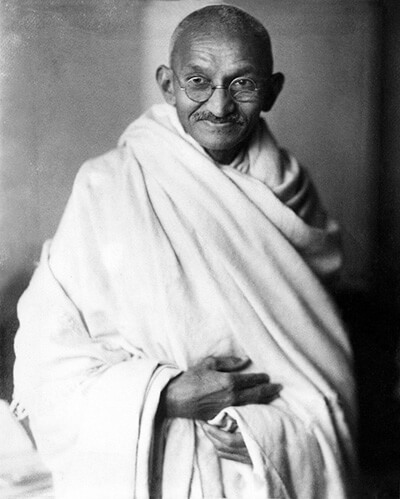
My informal research around leadership, described above, leads to a key concept for leadership development. In order to create positive change – such as making the world a better place – we need to work intensively on ourselves. In other words, leadership is largely a journey of focused, self-development. In order to be an effective leader and to help make the world a better place, we need to “Be the change we wish to see in the world,” a phrase attributed to Mahatma Gandhi (“Gandhiji” – as he is referred to with reverence in India). This idea aligns with reflective practice, learned optimism, appreciative inquiry, and other approaches that emphasize development of self as the lever for effecting positive change.
0.4 A LEADERSHIP MATRIX
In thinking about how we work to become our best selves and best leaders, I’ve boiled some concepts down into what I call the Leadership Approach Matrix or LAM. This is the overarching matrix I use to present what I see as five foundational elements of leadership.
- Get Anchored: Implement and maintain core practices for physical and mental health, and thereby cultivate inner peace.
- Self-Regulate: Develop skills and techniques which enable us to choose our response, rather than reacting from ego, particularly in challenging situations.
- Follow The North Star Values: Commit to, and demonstrate fidelity to, the core values of truth, justice and service.
- Show Up With Character: Develop and demonstrate the character attributes of courage (strength), mindfulness (calmness), and compassion (love).
- Engage With Compassion: Bring a cooperative mindset to our interactions and communication which prioritizes care for others and unconditional compassion.

1.0 GET ANCHORED

Leadership is a bit easier when the waters are calm. But, how often are the waters calm? Part of leadership is helping to navigate through challenges, and the challenges can often be fairly turbulent. As a leader, if I can maintain a measure of inner peace in my mind and heart, I’m better equipped to respond to the challenges as they come.
Having inner peace can be described as being calm, centered, balanced, grounded or anchored, and maintaining inner stillness or tranquility. It is critical to be calm, centered and anchored to withstand and navigate the storms as they come.
 I seek wisdom wherever I can find it, and I deeply appreciate leaders – in all walks of life – who inspire me with their wisdom. In one of his lectures, I once heard His Holiness The 14th Dalai Lama say that mental suffering is worse than physical suffering. It is an interesting concept and we could debate the idea, but I take from it that physical suffering (a sore throat, a broken arm) often has physical remedies. Mental suffering seems to me to be much more complicated and often more challenging to address. Inner turmoil – essentially the opposite of inner peace – diminishes our calmness and our joy. Arguably, many of the problems in our world can be attributed to a deficit of inner peace among individuals and in societies.
I seek wisdom wherever I can find it, and I deeply appreciate leaders – in all walks of life – who inspire me with their wisdom. In one of his lectures, I once heard His Holiness The 14th Dalai Lama say that mental suffering is worse than physical suffering. It is an interesting concept and we could debate the idea, but I take from it that physical suffering (a sore throat, a broken arm) often has physical remedies. Mental suffering seems to me to be much more complicated and often more challenging to address. Inner turmoil – essentially the opposite of inner peace – diminishes our calmness and our joy. Arguably, many of the problems in our world can be attributed to a deficit of inner peace among individuals and in societies.
Thankfully, we don’t all need to be Buddhist monks in order to cultivate inner peace. Getting anchored means that we can employ certain core practices for physical and mental health – well-grounded in science and research – so as to cultivate and maintain the inner peace we need to be effective leaders.
1.1 “ANCHOR MANAGEMENT” – PRACTICES AROUND INNER PEACE
Over the years, I’ve given a lot of thought to try to discern the types of activities that help me cultivate and maintain inner peace. I’ve arrived at four “Foundational Practices” which help to support optimal physical and mental well-being. The practice areas are: diet, exercise, sleep (and “sleep hygiene”), and what I call “breath / mind / body” practices (such as meditation, yoga and others). While most of these seem obvious, there are some amazing nuances in each of these areas. And, like most people, I’m far from perfect in my practices, and I’m on my own journey to work to be better and more consistent in each of these areas.
1.2 FOUNDATIONAL PRACTICES: DIET
“Follow the USDA.” For personal health, and for the welfare of our planet and its animals and ecosystems, I strive to follow a primarily plant-based diet. Knowing that diet can be a very sensitive and personal topic, I try not to be too pushy or preachy about my own preferences in this area, but I do enjoy sharing my dietary approach with folks who are interested in this discussion. Additionally, I have an appreciation for the science and research that goes into the U.S. Department of Agriculture’s dietary recommendations. According to the Dietary Guidelines for Americans 2020-2025, a healthy eating plan:
- Emphasizes fruits, vegetables, whole grains, and fat-free or low-fat milk and milk products
- Includes a variety of protein foods such as seafood, lean meats and poultry, eggs, legumes (beans and peas), soy products, nuts, and seeds
- Is low in saturated fats, trans fats, cholesterol, salt (sodium), and added sugars
- Stays within recommended daily calorie needs
USDA’s MyPlate Plan can help identify what and how much to eat from the different food groups while staying within the recommended calorie allowance.
Consult with Primary Care Provider, and mindfulness is key. Beyond the USDA recommendations, the first rule of thumb in diet is to always consult with your Primary Care Provider. Just because a food group is on the USDA’s Dietary Guidelines list does not mean that it is good for everyone, especially given food allergies and sensitivities.
Additionally, as we strive for a healthy, balanced diet, it’s important to note that “diet” can be considered as food and nutrition, but also as what we put into our bodies or the things we ingest. Mindfulness is key, as everything that we put into our bodies can impact our ability to be anchored.
 Oh, caffeine, what are we going to do with you?! Over the years, I’ve had periods of being on and off of the caffeine train. I’ve talked with folks who love their caffeinated beverages and we agree that it gives us a boost and can help with mental clarity, but have you ever had too much caffeine and been jittery? Couldn’t sleep? Tried to quit and gotten headaches? I’m not promoting complete abstinence from everything but, undoubtedly, clean living is best and “occasionality” (not a real word, but it works, right?!) and moderation are very important, and are good, guiding principles when it comes to what we put into our bodies.
Oh, caffeine, what are we going to do with you?! Over the years, I’ve had periods of being on and off of the caffeine train. I’ve talked with folks who love their caffeinated beverages and we agree that it gives us a boost and can help with mental clarity, but have you ever had too much caffeine and been jittery? Couldn’t sleep? Tried to quit and gotten headaches? I’m not promoting complete abstinence from everything but, undoubtedly, clean living is best and “occasionality” (not a real word, but it works, right?!) and moderation are very important, and are good, guiding principles when it comes to what we put into our bodies.
1.3 FOUNDATIONAL PRACTICES: EXERCISE
The basics. The benefits of appropriate (to the individual) and regular exercise are widely known. These benefits include better physical and mental health, and overall longevity of life. And, appropriate exercise can be absolutely foundational to one’s ability to maintain calmness, clarity and joy. As with diet, the first rule of thumb is to always consult with your Primary Care Provider as to any exercise regimen which may be well-suited to your unique health circumstances, or where to refrain from certain exercise practices.
The U.S. Centers for Disease Control and Prevention (CDC) provides the following guidance and recommendations around frequency of moderate-intensity aerobic activity and muscle-strengthening activity.
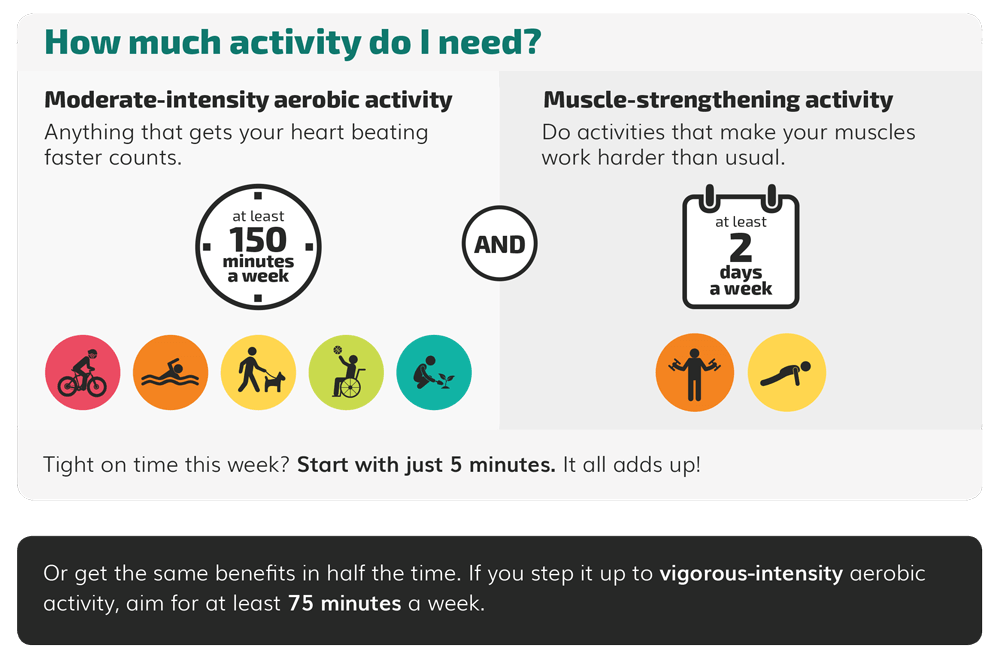
For more, general information on exercise from the CDC, please see the following resources:
The Miracle Exercise – Walking. One form of exercise that is commonly known as a boon to health and well-being is walking. As the pandemic became a significant factor in 2020 and brought about many changes and limitations in our regular routines, many of us became more regular walkers. Of course, everyone has different abilities and health situations, so consultation with your Primary Care Provider – even for relatively low-impact exercise such as walking – is advised. For those who can participate in regular walking, the benefits of this seemingly simple exercise can be extraordinary for body, mind and spirit. Another great resource from the CDC, with links to other excellent resources, is the following: CDC – Why walk? Why not!.
As I have become a zealous advocate for walking, I started to notice articles and information that sing the praises of this activity. One recent article I came across and which is very worthwhile is headlined, “What you should know about the most underrated form of exercise.” This article highlights studies which show that the benefits of walking include better physical and mental health, increased mindfulness, and enhanced communication skills. Specifically, walking:
 Improves physical health (lose weight; lower blood pressure and cholesterol; and reduce risk for heart disease, diabetes and cancer)
Improves physical health (lose weight; lower blood pressure and cholesterol; and reduce risk for heart disease, diabetes and cancer)- Improves memory and cognitive capability
- Boosts mood and lowers stress
- Is energizing, yet also helps with sleep
- Is a safe, easy exercise for newbies, or a vigorous workout, as appropriate
- Builds family and community bonds
- Is free and can be done almost anywhere
1.4 FOUNDATIONAL PRACTICES: SLEEP AND “SLEEP HYGIENE”
Best practices. I mean, really, who among us gets enough good, solid, high quality, consistent sleep? Each and every night? Practically always? For those few lucky souls who fit this description I say, “More power to ya!” Although the benefits of sleep are widely known, it can be a real challenge for many of us to get the good, solid, high quality, consistent sleep necessary to be our best selves and to be outstanding leaders.
Many years ago, I heard the phrase “sleep hygiene” in reference to the practices necessary to support excellent sleep. Again, information from the CDC on this topic is very helpful, with its Tips for Better Sleep including the following:
- Be consistent. Go to bed at the same time each night and get up at the same time each morning, including on the weekends (more on this, below)
- Make sure your bedroom is quiet, dark, relaxing, and at a comfortable temperature
- Remove electronic devices, such as TVs, computers, and smart phones, from the bedroom
- Avoid large meals, caffeine, and alcohol before bedtime
- Get some exercise. Being physically active during the day can help you fall asleep more easily at night

Be consistent – regular sleep schedule. While many of the practices listed above are fairly well known, the first practice – be consistent – is a bit less obvious and actually more important than many realize. And, admittedly, many of us follow the perhaps ill-advised practice of “later to bed and later to rise” around weekends and time off. However, a recent article on this topic noted the following:
“Compared with people who had the most regular sleep time, those with the most irregular sleep time – more than a 90 minute difference on average across seven nights – had more than a two-fold increased risk of cardiovascular disease over a 5-year period,” said study author Tianyi Huang, an assistant professor of medicine and associate epidemiologist at Brigham and Women’s Hospital and Harvard Medical School.
To see some of the scholarly work in this area, please see the following journal article: Sleep Irregularity and Risk of Cardiovascular Events: The Multi-Ethnic Study of Atherosclerosis. Journal of the American College of Cardiology (J Am Coll Cardiol. 2020 Mar, 75 (9) 991–999).
1.5 FOUNDATIONAL PRACTICES: “BREATH / MIND / BODY” PRACTICES
Introduction. We all know the age-old advice to calm us down, “Take a few deep breaths.” Well, there is science that validates that this works. This is because breathing regulates the nervous system (specifically, the vagus nerve) and the nervous system regulates (or dysregulates) our inner peace. So, I like to emphasize what I call “breath / mind / body” practices, and specifically those practices which help us to regulate our breathing.
Interestingly, as I was formulating some of my content around the importance of the breath, I saw an article titled, Breathe better to live better: Why breathing is your superpower. The article was written by Dana Santas (a certified strength and conditioning specialist and mind-body coach for professional athletes, and known as the “Mobility Maker”) and highlights some of her work around breath techniques with professional athletes. These types of techniques are becoming more and more prevalent in sports, the arts, business and entertainment.
The vagus nerve and breath regulating nervous system. With due respect to my colleagues in Nevada, we’re not talking about that Vegas. The vagus nerve, historically cited as the pneumogastric nerve, is the tenth cranial nerve or CN X, and interfaces with the parasympathetic control of the heart, lungs, and digestive tract. It is the longest nerve of the autonomic nervous system in the human body and comprises sensory and motor fibers.
Recent findings from Dr. Dayna McCarthy, a rehabilitation-medicine physician and a lead clinician at the Mount Sinai Center for Post-COVID Care in New York City, indicated the following:
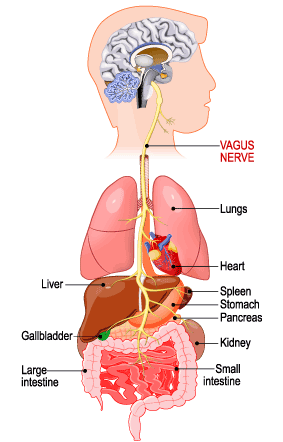 “…a proper breath happens in the nose and goes deep into the diaphragm; it stimulates the vagus nerve along the way, helping regulate heart rate and the nervous system.”
“…a proper breath happens in the nose and goes deep into the diaphragm; it stimulates the vagus nerve along the way, helping regulate heart rate and the nervous system.”- “Through breathwork, patients can consciously control their heart rate…In addition, modulating the nervous system’s fight-or-flight response may help regulate the immune system… And proper breathing is crucial to circulation in the lymphatic system, often described as the body’s highway for immune cells…which plays a role in eliminating toxins and waste.”
Core practices. My primary practice is meditation, and I’ve been practicing meditation daily since 1995. And, there are a number of practices other than meditation which can also help us to focus on our breathing so as to regulate our nervous system and thereby support calmness, peace and clarity. Some of these activities include:
- Meditation
- Meditation combined with mantra (e.g., OM, AUM, om mani padme hum, so hum, ram, others)
- Yoga
- Breathing techniques (e.g., box-breathing, pranayama, and others)
- Other, individualized enhancement practices which can help promote stillness and peace in breath, mind and body (more on this, below)
Many of these practices originate from Asia and the East, though today they are practiced all over the world. And, not every practice is necessarily for everyone. The important thing is that we identify which breath / mind / body practices work best for us, and stick to them.
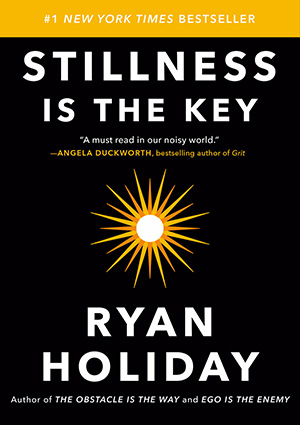 Individualized enhancement practices. In addition to the core practices listed above, one of my friends and mentors, Jim Stroker, introduced me to some work around “stillness” by author Ryan Holiday. In his Talks at Google video, based on his book, Stillness is the Key, Ryan Holiday describes what he sees as several key strategies – other than meditation – to cultivate stillness, as follows:
Individualized enhancement practices. In addition to the core practices listed above, one of my friends and mentors, Jim Stroker, introduced me to some work around “stillness” by author Ryan Holiday. In his Talks at Google video, based on his book, Stillness is the Key, Ryan Holiday describes what he sees as several key strategies – other than meditation – to cultivate stillness, as follows:
- Get up early
- Start the day phone-free
- Go outside
- Journal
- Walk
- Don’t watch the news (a lot)
I love all of these suggestions. In particular, many of us do have a tough time not looking at our smart phones first thing in the morning, but starting the day without immediately checking email and other items on our phones does make for a more calm start to the day. As weather permits, I have also started to enjoy getting up early and sitting outside with a cup of tea in the quiet of the early morning. Being outside, and especially in natural environments, is especially wonderful. For those in cities or more urban areas, I’d suggest the closest, easy-to-access location by your home or apartment where you can comfortably sit outside in good weather. During the pandemic, I also started a long-overdue practice of daily journaling in the notes app on my phone and, specifically, keeping a daily “gratitude journal” where each day I list at least three things I’m thankful for. Walking? ‘Nuff said. Other things I would add to this include spiritual activities, reading and writing, gardening, creating and/or appreciating art and music, and other activities which soothe the soul.
Getting anchored is among the best and most important, foundational work we can do in our lives. If you haven’t started, start now. If you have started, maintain effort! It is a lifelong journey – it never ends.
Careful as someone crossing an iced-over stream
Alert as a warrior in enemy territory
Courteous as a guest
Fluid as melting ice
Shapeable as a block of wood
Receptive as a valley
Clear as a glass of water
– Tao Te Ching –
2.0 SELF-REGULATE

“Between stimulus and response, there is a space.
In that space is our power to choose our response.
In our response lies our growth and our freedom.”
– Viktor Frankl –
Getting anchored helps to establish a foundation for calmness and inner peace. Like the anchor for a boat, it is an essential element for well-being throughout the journey, and it is critical to have in place when the storms come. And if and when the storms come, the anchor helps to assure that the boat is not immediately tossed into the rocks and damaged. However, the anchor alone will not prevent the storms from coming and, if the boat starts to take on water, we need both calmness and highly effective strategies to respond so as to assure that the water entering the boat does not lead to disaster.
With self-regulation, we work to understand and develop skills and techniques which enable us to choose our response, rather than reacting from ego, particularly in challenging situations. If we understand the tools of self-regulation, and use them well, we can mitigate challenges and optimize our ability to navigate a successful journey.
2.1 WALT DON’T TRIP
I had an experience a few years ago that really got me thinking about self-regulation, though I was not yet thinking about it in those terms. I have had a lifelong passion for music (mostly listening, and very minimal playing), and I absolutely love all genres of music. And, I love live music events, in all venues large and small, and I’ll gladly travel a distance to see bands and artists I like.
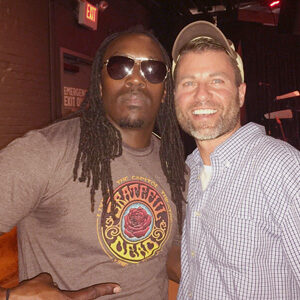 In my neck of the woods in northwest Vermont, we have the annual Burlington Discover Jazz Festival. One year, during the days of the multi-day Festival, my wife and I were walking on Church Street and heard the funky, groovy, jazzy sound of the Stooges Brass Band coming from City Hall. We waltzed on over to the gig and we were blown away by the amazing music from these guys.
In my neck of the woods in northwest Vermont, we have the annual Burlington Discover Jazz Festival. One year, during the days of the multi-day Festival, my wife and I were walking on Church Street and heard the funky, groovy, jazzy sound of the Stooges Brass Band coming from City Hall. We waltzed on over to the gig and we were blown away by the amazing music from these guys.
A year or two later, in summer of 2015, the Stooges – who hail from New Orleans – were coming back on a summer tour of the northeastern U.S., and playing a revolving circuit of gigs in Vermont, Massachusetts, New York and other locations. In all, they played a gig in Burlington every week for about 4 weeks that summer. At the first of those gigs, my wife and I went to see them at a local club and we danced and grooved the night away. After the gig, Walt (known as Whoadie), the band’s leader, was relaxing in the club and chatting with folks, and I said hello and let him know how much I loved their music and the gig. We became fast friends and exchanged contact info, and I invited Walt and the band to come over to our house the following week for a barbecue when they were coming back to town.
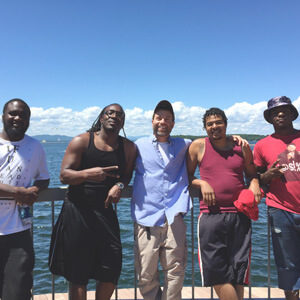 They came to our house several times that summer, and we had some great times. On one of those occasions, Walt, who was always doing everything needed to maintain the band and the logistics of their gigs, was off doing some necessary chores (getting tires replaced on the tour van, maybe?), and some of the guys from the band were with me going to the supermarket to get food for our cookout that night. The guys started to talk about Walt, their leader, with great respect, and described how he kept his cool no matter what went wrong on a hectic summer tour. Instrument got damaged? “Walt don’t trip.” Hotel lost their reservations? “Walt don’t trip.” Venue has sound problems? “Walt don’t trip.” I knew he was a great guy, but I was amazed that this leader could keep it 300 (Cool, Calm and Collected) even in the most hectic and frustrating circumstances. How can we all do this?
They came to our house several times that summer, and we had some great times. On one of those occasions, Walt, who was always doing everything needed to maintain the band and the logistics of their gigs, was off doing some necessary chores (getting tires replaced on the tour van, maybe?), and some of the guys from the band were with me going to the supermarket to get food for our cookout that night. The guys started to talk about Walt, their leader, with great respect, and described how he kept his cool no matter what went wrong on a hectic summer tour. Instrument got damaged? “Walt don’t trip.” Hotel lost their reservations? “Walt don’t trip.” Venue has sound problems? “Walt don’t trip.” I knew he was a great guy, but I was amazed that this leader could keep it 300 (Cool, Calm and Collected) even in the most hectic and frustrating circumstances. How can we all do this?
2.2 VIKTOR FRANKL AND THE POWER TO CHOOSE OUR RESPONSE
Introduction. Viktor Frankl was an Austrian neurologist and psychiatrist as well as a Holocaust survivor, and is most notable for the best-selling book, Man’s Search for Meaning. I became familiar with Frankl and his work through The 7 Habits of Highly Effective People, the most popular book written by Stephen Covey, who was an American educator, author, businessman, and keynote speaker, and who authored The 7 Habits along with other books on leadership.
Covey reflected on Frankl’s experience in the concentration camp and summarized Frankl’s concept of the power to choose our response as follows:
“They could control his entire environment, they could do what they wanted to his body, but Victor Frankl himself was a self-aware being who could look as an observer at his very involvement. His basic identity was intact. He could decide within himself how all of this was going to affect him. Between what happened to him, or the stimulus, and his response to it, was his freedom or power to choose that response.”
“The extent to which we exercise and develop (our human) endowments empowers us to fulfill our uniquely human potential. Between stimulus and response is our greatest power – the freedom to choose.”
Internal reaction and external response. My understanding of the power to choose our response is this. In almost every situation we encounter, there is an external environment and external stimuli. When we encounter the environment/stimuli, we have an “internal reaction.” We also have an “external response” to that environment/stimuli and, in the vast majority of situations, we have the power to choose our response. The following examples can help illustrate this idea.
If I accidentally touch a hot stove, I may yelp and pull my hand away quickly. It all happens in the flash of a nanosecond, almost instantaneously. Arguably, I have little ability in this scenario to choose my response. There is virtually no opportunity between my initial, internal reaction (how I feel internally about the situation) and my external response (my words and actions that others can see and hear).
Alternatively, if a colleague makes a rude, mean-spirited remark to me (“Hey, you’re stupid!”), the scenario is much different. Here, I will certainly have an internal reaction (maybe I feel hurt or frustrated or resentful), but there are many different ways that I can externally respond. My responses can range from very reactive (e.g., respond with similar rudeness) to very controlled (e.g., respond with mindfulness and calmness, even if I convey my displeasure with being treated rudely).
Importantly, we often dismiss the fact that we have the power to choose our response and thereby rationalize our negative response by blaming others for our own behavior. Why is that?
2.3 THE GREATEST ENEMY IS EGO
My daughter, Clara, has a good friend from high school named Gita, and our families became close friends through our kids. In spring of 2016, a few months before high school graduation, my family was visiting with Gita’s family at their house, and I learned that Gita’s maternal grandfather, Murali, was an avid practitioner of meditation (as am I). When Murali and his wife, Gomathi, came to the U.S. from India for Gita’s graduation and an extended visit that spring, Murali and I met and forged a deep bond around our mutual love of meditation and our shared quest as spiritual seekers.
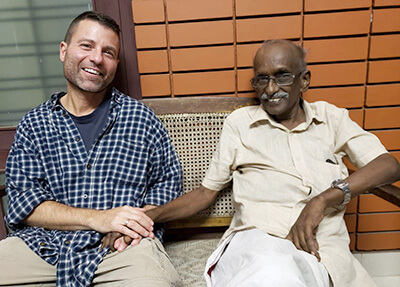 My dear friend and “classmate” (as he called us), Murali, passed away in December of 2019. In October of that year, I had the privilege of visiting with Murali and Gomathi and their family in India, and Murali and I had deep, spiritual conversations. One of the profound truths he shared with me was this: “The greatest enemy is ego.”
My dear friend and “classmate” (as he called us), Murali, passed away in December of 2019. In October of that year, I had the privilege of visiting with Murali and Gomathi and their family in India, and Murali and I had deep, spiritual conversations. One of the profound truths he shared with me was this: “The greatest enemy is ego.”
I’ve thought a lot about ego in the time since, and how it is often the unchecked ego that reacts – both internally AND externally – in challenging situations. Take the example, above, of someone making a rude, mean-spirited remark to me. If the “remarker” is a colleague, my ego may feel bruised and I may feel some internal resentment in that moment. If the “remarker” is a 4-year-old child in the supermarket, my ego may be fine and I may experience some internal surprise but no resentment. Whether the adult colleague or the 4-year-old child, who is in charge of my external response in the moment? While it may be easier to choose a calm and mature response to the young child, it is still in my power to choose my response to the adult colleague. The challenge is that, with the adult, if I do not work to choose and control my external response, my internal ego reaction can quickly lead to a very negative, external response, making a bad situation worse. I can very easily let ego make the choices and then blame the other person for my own poor response and behavior.
Bad reactions and/or responses coming from a place of negativity and driven by ego typically make things worse. Case in point – the snarky email (particularly in the work setting). Did you ever have a situation with a colleague or work acquaintance in which you felt some internal frustration and then sent an email to that person or people that you later regretted? Did you ever have the wisdom and presence of mind to write the email but put the draft aside, “sleep on it,” review it in the morning, and then either tone it down or decide to not send it at all because you knew your original draft would only make things worse? It requires work, but we have the power to choose our response.
When the external environment or external stimuli presents us with a challenging situation, the initial sense of internal frustration is very difficult to control. We’re human, we have feelings, and we will have internal reactions to situations. Managing our internal reactions is its own work. But, the internal (ego) reaction does not need to dictate the external response. We have the power to choose a better response. When I worked for Head Start, in my organization we had a great Human Resources Director. Every time I shared with her any situation that drove me crazy, she would say, with sincerity and positivity, “It’s an opportunity!” Jim Kouzes, co-author of the book, The Leadership Challenge, says, “Challenge is an opportunity for greatness.” And it’s true. In particular, the interpersonal and leadership challenges we face are opportunities to work to choose and execute the absolute best, most evolved responses to those situations and to become better versions of ourselves.
2.4 THE EXECUTIVE BRANCH – WE’VE GOT THE POWER
Executive function and self-regulation. We have the power to choose our response because of what is known as “executive function” – the cognitive processes which enable us to select, monitor and control our own behavior. These processes pertain to memory, reasoning, problem-solving, and planning, among other cognitive functions. In the field of early care and education, we focus a lot on the evolving nature of executive function in young children. However, executive function continues to develop throughout our lives, and we can actively work to improve executive function.
Self-regulation skills are part of executive function and are what provide us with the power to choose our response in situations. The Center on the Developing Child at Harvard University describes executive function and self-regulation as follows:
Executive function and self-regulation skills are the mental processes that enable us to plan, focus attention, remember instructions, and juggle multiple tasks successfully. Just as an air traffic control system at a busy airport safely manages the arrivals and departures of many aircraft on multiple runways, the brain needs this skill set to filter distractions, prioritize tasks, set and achieve goals, and control impulses.
When choosing our response to a situation, we are using executive function to self-regulate specifically in terms of focusing our attention, exercising impulse control, and being mindful in our behavior. In other words, we are focused on choosing a better external response than the knee-jerk, ego-reaction driven by impulse.
Metacognition: Thinking about Thinking. The ability to use executive function to self-regulate and choose our response means that we have to be vigilant in our thinking. Specifically, it means that we have to have a level of awareness and responsibility around our thinking and our thoughts, and how these translate into our external, observable behavior. “Thinking about thinking” is known as metacognition. In her article, How to Prioritize Tasks with an Executive Function Challenged Brain, Marydee Sklar notes that…”with a calmed brain, you can actually think and use your…prefrontal cortex to make a choice for your next action. Pause and use metacognition, which means thinking about your thinking.”
To take this a step further, self-regulation can entail not just being more aware of our thoughts, but actively selecting (or rejecting) specific thoughts. In a scholarly article published in Frontiers in Psychology, researchers noted that, “…higher order (Executive Functions) are required in most complex cognitive abilities such as problem solving, reasoning, and writing. Planning involves the selection, formulation and evaluation of a sequence of thoughts and actions to achieve a desired goal.”
I usually describe metacognition this way. Much of the time, we’re not “sitting above” our thoughts – we’re simply “in” a stream of thoughts as our mind goes (sometimes, seemingly randomly) from one thought to the next. If my mind is wandering like this, my thoughts may go from “What shall we have for dinner tonight?” to “That was a good meeting earlier today” to “I need to do the laundry this weekend” and so on. Oftentimes, there’s nothing wrong with a wandering mind and a stream of thoughts. However, there are many activities where we need to decrease mind-wandering and increase attentiveness to thought selection. If a surgeon is performing a complex, life-saving surgery, or an airline pilot is flying through treacherous conditions with a plane full of passengers, we’d prefer that those professionals minimize non-essential, distracting thoughts so that they can give their full attention to the task at hand.
The Chief Executive Thought Selector: The “Governor.” Even in situations that are not high stakes like performing a complex surgery or navigating an aircraft through a storm, our thoughts (internal) matter, as our thoughts are the precursor to our (external, observable) behaviors in terms of our words and actions. If we allow negative thoughts to color our perception of a situation, we decrease the likelihood of choosing the best response we can.
The chief executive officer in the executive branch of state government is the Governor. I use the concept of the “Governor” to describe that part of my mind that has the ability to monitor, select and de-select thoughts. If a colleague made a rude remark to me yesterday, and later my thoughts (perhaps somewhat unconsciously) seem to revolve around negative perceptions of that person and the situation, I may catch myself and say to myself, “Umm…Governor?!” This technique helps to snap me out of some passive, mind-wandering around negative thoughts, and reminds me to exercise some active control around thought selection. In this example, I may choose to give less fuel to the negative thoughts and feelings, redirect my thinking, and give more energy to some better and more constructive thoughts about the person and situation. This, in turn, positions me to choose a better and more optimal response to the challenging situation.
While this process is certainly easier when we have more time to process than with in-the-moment situations, with awareness, intention and effort we can make great strides in our ability to use executive function to self-regulate and choose our response.
“Keep your thoughts positive because your thoughts become your words.
Keep your words positive because your words become your behavior.
Keep your behavior positive because your behavior becomes your habits.
Keep your habits positive because your habits become your values.
Keep your values positive because your values become your destiny.”
– Mahatma Gandhi –
2.5 THE SELF-REGULATION REFRAMEWORK
Introduction. The concepts discussed above give us some insight and, hopefully, some confidence, around our ability to choose our response to situations, recognize that unchecked ego and ego-reaction can inhibit that ability, and that this ability derives from the tremendous capacities of our executive function. With this knowledge, I find it helpful to have some clear-cut tools for putting these skills and abilities into practice.
When I was directing a Head Start program, we served many children and families who had trauma histories, not to mention the trauma histories of many of us as staff, and the challenging and delicate nature of our work. Given this, we put time and energy into staff training around reflective practice and becoming a more trauma-informed organization. To help support this work and training, we brought in a fellow named Dave Melnick, a licensed clinical social worker and Co-Director of Outpatient Services for Northeastern Family Institute. Dave introduced us to a technique for processing and responding to challenging situations in our work with vulnerable children and families. Some of this work is based on a framework called RULER, which is an evidence-based approach to social and emotional learning developed at the Yale Center for Emotional Intelligence. RULER (Recognizing, Understanding, Labeling, Expressing, Regulating), often used in school settings, supports the community in: understanding the value of emotions; building the skills of emotional intelligence; and creating and maintaining a positive climate. While I think that RULER is incredible, I liked Dave’s framework and found it a bit more streamlined than the Yale model, as well as instantly applicable on the individual level.
As I was developing some of my work around leadership, I took Dave’s initial framework (“notice, name, neutralize”) and added to it some of my thinking and research around self-regulation (“reframe, respond”). Through our collaborative work, I’ve dubbed this the Self-Regulation Reframework, and consider it applicable not only to working with children and families, but across a wide spectrum of human interactions and challenging situations.
 “When the Storms Come”: Processing and responding to challenging situations. When we have a challenging situation or experience, the key steps in the Reframework are: Notice, Name, Neutralize, Reframe, Respond. Here are the detailed steps in the process:
“When the Storms Come”: Processing and responding to challenging situations. When we have a challenging situation or experience, the key steps in the Reframework are: Notice, Name, Neutralize, Reframe, Respond. Here are the detailed steps in the process:
- Notice. Notice any physiological symptoms / cues in my body (stomach, breathing, headache, tight jaw, etc.)
- Name. Name the cognitive experience – the negative emotion or feeling I’m having (stress, anger, anxiety, frustration, etc.)
- Neutralize (or metabolize). Neutralize with an activity or activities to help dissipate / reduce / let go of the negative state (walking, deep breathing, music, stepping back and “witnessing” the emotion / feeling, etc.)
- Reframe (internal). Reframe by considering, from a place of better calmness and peace, a different and more constructive way to conceptualize the situation (“How can I think about this differently and more constructively?”)
- Respond (external). Choose and execute my response. Respond to the situation, with words or actions, with intentionality and compassion, so as to optimize the likelihood of productive resolution or progress.
Thoughts on reframing and responding. When we’re processing a challenging situation or experience, it’s vitally important that we’re mindful of the language that we use as we work to conceptualize and reframe the situation. I was in a leadership training session with Stephen Shields, Senior Consultant & Executive Coach at Gallup, and Stephen referenced the issue of reframing “catastrophizing” language when addressing challenging situations. In a follow up meeting I had with Stephen, he attributed this idea to Dr. Martin Seligman, Director of the University of Pennsylvania Positive Psychology Center and Zellerbach Family Professor of Psychology in the Penn Department of Psychology, and Seligman’s book, Learned Optimism. Stephen explained that when processing challenging situations or experiences, we can fall into the habit of using catastrophizing language and think in terms of negative extremes or absolutes. For example, if I had a challenging conversation with a peer and we both came away feeling badly, I might catastrophize and say to myself, “I’m totally insensitive and uncaring,” rather than something like, “I should have listened a bit more and been less judgmental in that moment.”
I find that when I’m reframing, I’m reframing both the situation as well as my own identity and role within the situation – what I call “Anchoring in Identity.” Part of that anchoring in identity involves recasting myself as a helper – to the other person, people or situation – and reminding myself that the prime directive is that I bring, and do not lose, compassion. I work to re-anchor my identity and character around being strong (courageous), calm (mindful) and loving (compassionate) to set the stage for my best external response. Once anchored in identity, I try to execute my response with humility (minimizing ego-reaction), compassion (empathy for others) and truth.
In almost every situation, we have an internal reaction and an external response. The following graphic illustrates a way to think about this in the context of the Self-Regulation Reframework.

Alchemize. When done well, I think of this process as alchemy – the notion of turning lead into gold. We take a challenging situation that could be perceived as negative and, if poorly managed, spiral into a worse situation, and reframe it and respond to it in such a way that we’re bettering the situation, ourselves, and those around us.
The Reframework in Action. When I worked for Head Start, we had a particular project which required the approval of the federal Office of Head Start (OHS) – the government agency which funds and regulates Head Start programs across the U.S. Although this was not a “funding project,” for purposes of confidentiality I’ll refer to it here as a “funding project.” For this funding project, the OHS Regional Office sent correspondence to my agency and indicated that, for federal approval for the project, we needed to complete steps 1, 2 and 3, and the Regional Office provided specific detail on each of these three steps. Once completed, we then needed to provide documentation to the Regional Office that these steps were completed in order to receive approval.
My agency completed steps 1, 2 and 3, and provided the documentation to the Regional Office as instructed. We then received correspondence from the Regional Office which stated essentially: Your agency “did not comply” with step 4 of the Regional Office process. Your agency is being awarded the funding, but be advised that your agency did not comply with step 4 of the Regional Office process. Ahem. Step 4?! Now, when that correspondence gets sent from the Regional Office, an email notification goes out not only to me as the Head Start Director, but to our agency’s Executive Director, Chief Financial Officer, and the President of the Board of Directors for our agency. And so, although I was glad that our project was approved, as something of a perfectionist and type A personality, this mischaracterization of our agency’s performance, especially when going to the leadership of our organization…well, let’s say it concerned me.
As I sat and processed this official correspondence, I noticed my body reacting to this situation and, for me, that’s usually my stomach getting tight, for example. I named the feeling – “frustration, some resentment, feeling like an injustice has been done.” To neutralize, I went out for a walk in the rain, just to clear my head, and then talked it out with a family member and a close colleague. After a bit of letting go of the negative feeling, I was able to reframe and see this not simply as an injustice in OHS mischaracterizing our efforts and performance in this situation, but as an opportunity to think and talk with others, including OHS, about: Regional Office relationships with grantees (organizations such as mine); the balance of support and accountability shown by the Regional Office to local, community organizations; and mindfulness around the power dynamics in those federal-to-local relationships. It occurred to me that I could reframe and anchor my identity not as an avenger but as a helper, and perhaps this help could improve the culture and climate of the program both regionally and nationally. So, to respond to this situation I did not push back with official correspondence to cite an injustice and correct the record on this (though that was tempting). Rather, I set out to have this conversation – with humility, compassion and truth – with OHS officials and other, regional and local program administrators, around how these relationships and dynamics can be developed as federal-to-local partnerships. And, it is through these partnerships that together we can administer high quality programs which support our outstanding staff and which provide world-class service for our nation’s most vulnerable children and families.
3.0 FOLLOW THE NORTH STAR VALUES

In addition to key practices around anchoring and self-regulation, leaders need to be deeply rooted around core values. We can think of these core values as akin to the operating system of a computer. Everything done with a computer takes place within the context of the computer’s operating system. Likewise, everything done (or not done) by the leader takes place within the context of the leader’s core values. And, whether explicitly articulated or not, those values or the absence of them are readily apparent to others.
As I have observed people in leadership, I’ve tried to discern the values that I see as absolutely fundamental for effective, productive and constructive leadership which helps to support the well-being of humanity and our planet. Consistently, I come back to the importance of leadership which is committed to, and demonstrates, the core values of truth, justice and service.

3.1 FOUNDATIONAL VALUES FOR LEADERSHIP
What are values? “Values” can be a tricky word to define and understand. I’ve read varying definitions of “values,” and formulated my definition of values as follows.
Values are the principles, standards and ideals:
- That people deem to have paramount importance, virtue and special worth
- That inform the beliefs, customs, and institutions of society
- That guide behavior and our way of life
When I think about this definition, it almost conjures the sacred for me. Regardless of religion or spiritual belief, values represent core principles or ideas which speak to the essence of all that is noble and good in our common humanity. Values can transcend nations and any differences that separate us. At the collective level, they are a shared understanding of who we are and how we should be together in the world. They bind together societies and solidify and codify our shared agreements around how we will live together as human beings. At the individual level, values are the very foundation of our character and how we interact with the world.
The North Star and the JeTS. I refer to truth, justice and service as the “North Star Values.” The literal North Star, formally known as Polaris, is one of the brightest stars in the night sky, and its stability and position in the northern sky have made it a reference point for navigation for centuries. Symbolically, the North Star has represented constancy or steadfastness – a metaphorical compass to provide direction and keep us on course in pursuing our mission and purpose in life. It represents an unchangeable beacon of freedom, inspiration and hope.
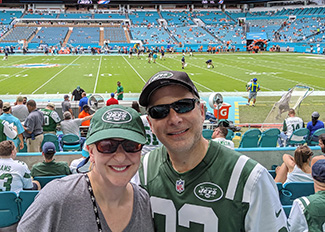 For me, these descriptions of the North Star apply to the immutable and extraordinary values of truth, justice and service that all leaders should aspire to. Although I like to consider these values in the order of truth, justice and service, my love of acronyms did not lead me to a catchy word that incorporated “TJS.” However, with a slight rearrangement in the order, and with the help of my high school friends and diehard New York Jets fans, Brian and Liz Epstein, I’ve arrived at “JeTS” as a quick shorthand for referencing these ideas.
For me, these descriptions of the North Star apply to the immutable and extraordinary values of truth, justice and service that all leaders should aspire to. Although I like to consider these values in the order of truth, justice and service, my love of acronyms did not lead me to a catchy word that incorporated “TJS.” However, with a slight rearrangement in the order, and with the help of my high school friends and diehard New York Jets fans, Brian and Liz Epstein, I’ve arrived at “JeTS” as a quick shorthand for referencing these ideas.
3.2 TRUTH
 Tell the children the truth
Tell the children the truth
Tell the children the truth
Tell the children the truth right now!
Come on and tell the children the truth
Tell the children the truth
Tell the children the truth
Tell the children the truth
Come on and tell the children the truth
– Babylon System by Bob Marley –
Introduction. Truth has been a core value for me since I was a young child. One of my most painful but important and formative experiences took place when I was maybe 8 or 9 years old. I had a friend in my neighborhood named Jonathan. He was not one of my closest friends, but part of a network of kids that I knew and would consider my neighborhood posse. I don’t recall how it happened or what the subject matter was but, although I was generally a very honest young kid, I had lied to Jonathan about something. He soon found out and said to me, point blank, with an angry and hurt look and tone, “You lied to me.” He then let me know that his birthday was quickly approaching and, in lieu of a party, his parents were taking him and a group of his friends to see a New York Mets baseball game at Shea Stadium, and that I would not be invited. I was devastated. I don’t think I’d ever been to a professional baseball game, and going to see the Mets was regarded as a pretty special experience for kids in my area back then. Although a painful experience for me, it drove home the importance and gravity of truth, and the value and implications of honesty and dishonesty.
What is truth? I’m not going to get theoretical or esoteric about the definition of truth, but will try to keep it simple and straightforward. Truth can be defined as: the body of real things, events, and facts; actuality or the actual state of a matter; the property (as of a statement) of being in accord or conformity with fact or reality. Reality, actuality, fact. Martin Luther King Jr. was awarded the Nobel Peace Prize in 1964 – this is a fact. It is reality, not speculation or opinion.
It’s important to draw a very clear distinction between objective truth and subjective perception. I usually think of objectivity as the practice of representing facts without personal feelings or opinions, and objective truth can often be based on science or empirical data. “Apples are fruits” is an objective fact. If I deny that apples are fruits, or claim that apples are actually fish, my denial or claim does not alter the fundamental, objective fact. My claims are simply not true, but false. Subjective perception is based on or influenced by personal feelings, tastes, or opinions. If I say, “The best and most tasty apples in the world are grown in Vermont,” that is a personal opinion, as tastiness is in the taste buds of the beholder, as it were.
Truth is sacred and should be revered. On an interesting semantic note, I’ve been concerned in recent years that many have become comfortable referring to their own, subjective opinion or perceptions as “my truth.” I have no interest in being the language police, but using the word “truth” in this manner concerns me in that, for me, it waters down the paramount importance of the word “truth.” If I say, “The best and most tasty apples in the world are grown in Vermont, and that’s my truth,” what I’m trying to say is that this is my opinion or perception based on my own experience (and maybe I’ve tried apples from many places in my day). The issue for me is that the phrase “my truth,” for me, can suggest a blurring of the line between objective truth (i.e., “everyone’s truth”) and subjective perception (my own personal feelings, tastes or opinions). For me, truth is sacred and should be revered, and, as with facts, we don’t each get to have our own, personal, subjective “facts.” By definition, a fact is not an opinion or perception, just as truth is not an opinion or perception.
Regardless of personal politics, or any type of group identity or affiliation, we as a humanity should be unequivocally committed to truth. Who would pride themselves as holding falsehood or lying as a virtue? We can have thoughtful and spirited disagreements on any range of topics, but truth should never be negotiable. However, in our modern world, we have seen some worrisome trends in recent years which suggest the need for constant vigilance in support of truth, and renewed, universal commitment to truth regardless of politics or policy positions.
A few last thoughts on the sacredness of truth. I love all music and I came of age growing up in New York during the “Golden Age” of hip hop. A phrase I’ve heard in many hip hop songs is, “Word is bond.” This phrase means the speaker is telling the truth and you can rely on it. It derives from an older saying, which in essence is, “A person’s word is their bond.” The idea is that a person’s word has value and represents their honesty, honor, integrity and dignity. Words matter, and truth in our words is critical. An important corollary to this is, “The deed should follow the word.” The idea here is that, if I say that I’m going to do something, it happens. Truth is important because truth builds trust – the foundation for constructive, enduring relationships. And, intent is important, but not sufficient, as execution is equally important. If I say that I will call you tomorrow, and neglect to do so, you may cut me some slack the first time. However, if I’m a repeat offender with too much “forgetting” and very poor follow-through on what I’ve said I will do, this will quickly diminish your trust in me and my word. It’s not that you think I’m intentionally lying, but that my truthfulness is shaky in that I don’t care enough or work hard enough to assure that my behavior aligns with my words.
Truth and leadership. Leadership entails supporting other people and providing guidance for people, organizations and endeavors to succeed. With this responsibility, it’s imperative that people have trust in the leader. The leader’s commitment to truth, and behavior which aligns with that commitment to truth, builds incredible trust.
There are several practices, with deep connections to truth, which can be challenging to carry out, but which are very fundamental. The first is the critical importance of always acknowledging truth. And, this means acknowledging all dimensions of truth, not just those aspects which are convenient. If you and I have differing views, but you share truth, I honor and acknowledge it with respect. It may not serve the overall point I’m trying to make, or persuade you to see things my way. But, acknowledging truth with sincerity and humility builds trust, and communication and relationships – and, dare I say, the success of humanity – are built upon that trust.
Too often, in my view, we are quick to dismiss, attempt to refute, or fail to acknowledge a point of truth if it does not serve our “position” or the argument we are trying to make. For example, suppose my friend, Andy, who lives in Vermont, needs to replace his old car. He’s narrowed it down to specific makes, models and model years for Cars “A” and “B.” Car A is a hybrid vehicle that runs on both electricity and gasoline, but does not come in all-wheel-drive. Car “B” is an all-wheel drive vehicle, but is gas-powered with no hybrid or electric option. Andy is leaning more toward Car A, but asks for my thoughts, and I’m leaning toward Car B.
Imagine snippets of this conversation from two parallel universes:
Acknowledge truth universe
Andy: “I’m leaning toward Car A because people using less fossil fuel to power our vehicles on a daily basis is better for the environment.”
Paul: “Yeah, that’s for sure. People using less fossil fuel on a daily basis to power our vehicles is definitely a good thing for us and the planet. I also wonder if there are some other, system changes that might make a bigger and quicker impact at reducing carbon in our atmosphere. Things like moving more toward regenerative agriculture and caring for and cultivating our forests. Although, even with big systemic changes, we should still do the individual things that can help, like moving toward electricity to power our vehicles.”
Andy: “Yupper!”
Paul: “What I like about Car B – the way I would go – is the all-wheel-drive, which can add a bit of safety in some types of snowy conditions during winter in Vermont.”
Andy: “Absolutely. Those cars have been engineered really well for those conditions. Although, I do drive pretty much like a sloth in the snow, and I always make sure I’ve got top-of-the-line snow tires in good condition. So, not sure that AWD is critical for me, though it would be nice.”
Paul: “Word.”
Dismiss/refute/fail to acknowledge truth universe
“I’m leaning toward Car A because people using less fossil fuel to power our vehicles on a daily basis is better for the environment.”
“I’m not sure it’s better for the environment. Maybe the Car A factory has more carbon emissions than the Car B factory. And, you might not be using less fossil fuel because, if the winter is extremely cold, you may burn more oil in your furnace to heat your home.”
“Um, uh-huh.”
“What I like about Car B – the way I would go – is the all-wheel-drive, which can add a bit of safety in some types of snowy conditions during winter in Vermont.”
“I’m not sure that AWD makes a difference in safety. My aunt, who has a recent model Car B, says that she doesn’t think AWD makes the car perform any better. And, with climate change and global warming, the Vermont winters may be less and less snowy so I won’t need AWD.”
“Um, uh-huh.”
Very different tone to each conversation, and very different likelihood of high-level collaboration in working together and reaching the best decision or outcome.
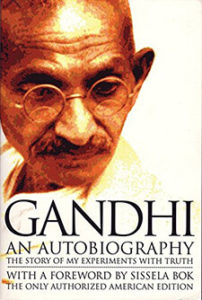 The second practice with deep connections to truth is the practice of course correcting in light of truth. Gandhiji, whose autobiography is subtitled, The Story of My Experiments with Truth, noted that if we hold truth as a guiding value, we “must always hold (ourselves) open to correction, and whenever (we discover ourselves) to be wrong, (we) must confess it…and atone for it.” I interpret the “confess and atone” to mean not only apologizing and making amends if that is appropriate for the circumstances, but adjusting our thinking, behavior and systems to better align with truth as we have better and more objective data. An example of this from my days as a Head Start Director was when the Covid-19 pandemic began to emerge in 2020. Prior to the pandemic, the federal Office of Head Start – the government agency which funds and regulates Head Start programs across the U.S. – had in place fairly strict regulations around enrollment and programming schedules. For decades, the vast majority of Head Start programs were held accountable for maintaining full enrollment with waitlists, and for providing services that met regulatory requirements around minimum numbers of hours of service per day and days of service per year. Within weeks of the pandemic emerging in the U.S., based upon the quickly evolving data, the Office of Head Start made major, nationwide, course corrections, affording local programs extremely wide latitude and flexibilities around enrollment and program schedules in order to prioritize the health and safety of children, families, staff and communities. In my decades of work in this capacity, I had never seen OHS so responsive and nimble as when these course corrections rolled out, and I was duly impressed with the leadership in that moment, particularly at the helm of a fairly bureaucratic, federal government agency.
The second practice with deep connections to truth is the practice of course correcting in light of truth. Gandhiji, whose autobiography is subtitled, The Story of My Experiments with Truth, noted that if we hold truth as a guiding value, we “must always hold (ourselves) open to correction, and whenever (we discover ourselves) to be wrong, (we) must confess it…and atone for it.” I interpret the “confess and atone” to mean not only apologizing and making amends if that is appropriate for the circumstances, but adjusting our thinking, behavior and systems to better align with truth as we have better and more objective data. An example of this from my days as a Head Start Director was when the Covid-19 pandemic began to emerge in 2020. Prior to the pandemic, the federal Office of Head Start – the government agency which funds and regulates Head Start programs across the U.S. – had in place fairly strict regulations around enrollment and programming schedules. For decades, the vast majority of Head Start programs were held accountable for maintaining full enrollment with waitlists, and for providing services that met regulatory requirements around minimum numbers of hours of service per day and days of service per year. Within weeks of the pandemic emerging in the U.S., based upon the quickly evolving data, the Office of Head Start made major, nationwide, course corrections, affording local programs extremely wide latitude and flexibilities around enrollment and program schedules in order to prioritize the health and safety of children, families, staff and communities. In my decades of work in this capacity, I had never seen OHS so responsive and nimble as when these course corrections rolled out, and I was duly impressed with the leadership in that moment, particularly at the helm of a fairly bureaucratic, federal government agency.
3.3 JUSTICE
“Let justice roll down like a river, and righteousness like a mighty stream.”
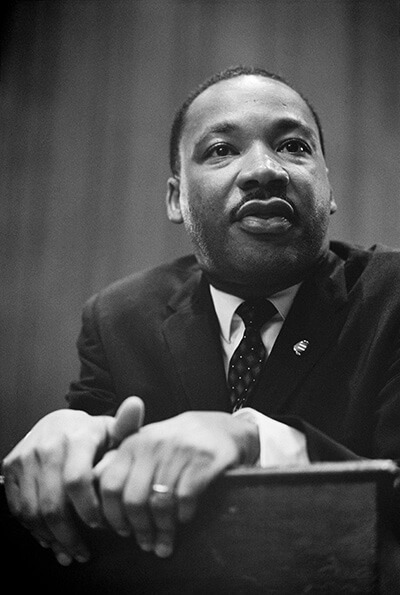
Thank you, Dr. Martin Luther King Jr.
Introduction. The concept of justice can be challenging to define. In fact, although I have an intuitive sense of what justice means to me, in April 2021 I convened a group of about 20 family members and friends via zoom for a “Justice Summit.” The primary focus of that virtual meeting was to talk about what justice means to each of us, and to work toward a unifying concept or definition of justice. We had a deep, wide-ranging conversation, and folks offered many thoughts on the concept of justice and its many dimensions.
The Justice Summit spurred my thinking toward some common threads or themes that continue to surface each time I think about justice, or hear it described by other people. My best, composite definition of justice is that it encompasses the following notions:
Fairness vs. unfairness.
Right and wrong.
The way things should be.
Justice is a fascinating concept for me in that we have an intuitive sense of justice from the time that we’re very young children. Admittedly, children learn values from their parents, families and other people in their lives. And, at the same time, if a young child is playing with blocks and building a structure, and another child comes over and takes the blocks away or intentionally topples the structure, the first child will often have a strong, adverse reaction. Even if the child does not yet have significant language skills, the child’s distress at having the blocks taken away or toppled conveys a sense that the second child’s behavior was unfair, it was wrong, and it was not the way that things should be. The first child feels a sense of personal violation and, perhaps, a deeper sense that the proper order of things has been summarily disrupted. An injustice has been done.
The way things should be. In recent years, there have been many visual depictions and memes which endeavor to illustrate the concept of justice. And, many of these images try to distinguish and define justice relative to the concepts of equality and equity. While none of these may be perfect or have universal consensus, the following illustration is my current favorite.
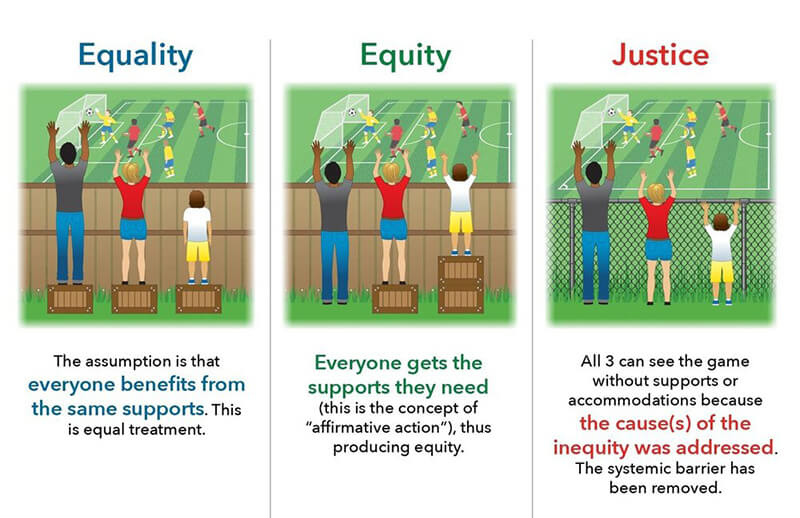
One of the aspects that I like about the illustration above is that it references “systems” as a key element of justice or injustice. The picture itself does not provide a complete context for what is happening, other than to show that 3 people (kids?) of differing heights are behind a fence and trying to watch a soccer (er, “football” for those outside the U.S.!) game. Now, indulge me for a moment while I invent some other context for this picture. Let’s assume that the soccer/football game is taking place at a local public school, the game is free and open to the public, there are limited seats at the game and they’re all taken, and the 3 people trying to watch are local, neighborhood kids. From left to right, I’ll call them “kid 1, kid 2 and kid 3.” And, let’s assume that, for safety reasons, it’s important to have a fence around the school’s outdoor area.
It just so happens that, in the first 2 frames, the wooden fence is solid and creates a complete barrier to visibility for those not tall enough to see over it. In the third frame, the conventional chain link fence provides enough leeway for kid 3 to watch the game through the fence, and alleviates the need for kid 2 and kid 3 to stand on those precarious looking wooden crates. (And, what if you don’t even have crates?). The change in the “system” creates a much more optimal experience not only for kids 2 and 3, but also for kid 1, who can now have the full enjoyment and pleasure of watching the game together with friends who no longer require any questionable supports or accommodations. Much more the way things should be.
Justice and leadership. Justice is an essential value for leadership. In formal leadership positions, the leader often has decision-making authority over many aspects and elements of the endeavor. Thus, the leader bears the responsibility for assuring justice – fairness, rightness, the way things should be – for everyone impacted by the endeavor and the leader’s decisions. Constituents will very quickly perceive any aspect that they feel does not align with the principles of justice, from the largest of issues to the smallest of details.
When I worked as Director of a Head Start program, we rigorously followed federal regulations which required that all programs nationally have fair and unbiased systems of recruiting, selecting and enrolling eligible children and families. These regulations, and local policies developed to align with these requirements, were designed such that no child/family would receive preferential or discriminatory treatment. As a program designed to serve primarily children and families with low income, the criteria were designed to prioritize for recruitment, selection and enrollment those children and families most in need of Head Start services based upon objective criteria such as family income and risk factors.
The principle of justice would also come into play when managing employees. Our program operated much like a school, only we had numerous early care and education classrooms and home visiting services spread across a 2,000+ square mile service region in northwest Vermont. If one of our teachers moved from one part of our region to another town many miles away, and requested a transfer to another teaching position closer to their home, our Human Resources Director might ask me, “Would you be willing to do that for any other employee in similar circumstances?” Of course, we would, and our HR Director was very mindful that we always maintained this sense of fairness and equal treatment of employees. Likewise, when the pandemic ushered in a new age of telecommuting, our organization had deep conversations around how decisions would be made around telecommuting or “hybrid” work arrangements for individual employees so as to assure fairness and just treatment for all employees.
Urgent (and intersecting) areas of justice. Leaders should be attentive to justice issues both great and small. In particular, in today’s world there are several major areas of justice which have great urgency. In the “Justice Summit” referenced above, and in many other conversations I’ve had with family and friends, I’ve asked folks what they see as the most urgent, and intersecting, areas of justice in our world today. While people can see this differently, or call out different groups or issues, I continue to see the following as the most urgent areas of justice today:
- Racial justice
- Economic justice
- Social justice
- Environmental justice
Without going into great detail, racial justice is clearly an extraordinary issue in the U.S. and in some other countries. In my leadership role with Head Start, I launched a Racial Justice Discussion Group (RJDG) which met every other week during the 2020-2021 school year, and which was co-facilitated by my colleague Virginie Diambou, CVOEO Racial Equity Director, and me. Each meeting, we had a special guest to join in the conversation, and these guests included such folks as the State of Vermont’s Executive Director of Racial Equity; Members of Vermont’s Commission on Native American Affairs; the University of Vermont’s Vice President for Diversity, Equity and Inclusion; the Federal Program Specialist and Culturally and Linguistically Responsive Practices Content Lead for the federal Office of Head Start; and others. For the first part of the school year, as a resource, our RJDG reviewed and discussed the Seeing White podcast series from the Center for Documentary Studies at Duke University. For the latter part of the school year 2020-2021, our RJDG had discussions around Ibram X. Kendi’s book, How to Be an Antiracist. I highly recommend that leaders engage with experts and explore resources such as those listed above – they have had a profound impact on many of us as we continue our personal and professional journeys with this work.
I’ll simply say that leadership must also grapple with the issues of economic justice, and the unconscionable wealth gap between the haves and the have nots in this world. It is unacceptable that 10% of the world’s population — more than 735 million people – live in abject poverty on less than $1.90 (US) per day, while the world’s richest 1% have more than twice as much wealth as 6.9 billion people. Social justice movements around the world are striving to eradicate intolerance, inequality and oppression in all of their insidious forms, and achieve basic human rights and equality, inclusive of high quality education, health care, housing and other supports. Environmental justice seeks to reverse the course of degradation of our planet, its climate, ecology and wildlife, and to create a healthier, sustainable future for the earth and its ecosystems, humanity, and our fellow species. I think of icons like Jane Goodall, and recent champions like Greta Thunberg, who inspire and lead in this work.
It is the work of leadership – not just those in formal positions of leadership, but all of us as leaders – to bring about justice: the way things should be.
3.4 SERVICE
“Service is the rent we pay for the privilege of living on this earth.”
– Shirley Chisholm –
Early educator and the first Black woman elected to the United States Congress (1968)
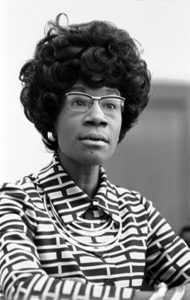
Service as an organizational leadership value. I first heard the phrase “servant leadership” associated with Mahatma Gandhi. There are various ways to consider the meaning of servant leadership, though I think that it begins as having a personal value around service and then extending this as a leadership value, often within an organizational context. I’ll start with some thoughts on this latter idea, and then dive deeper into the profound meaning of service on a personal level.
As a leadership value in the organizational context, we can think of service as a duty to all of the organization’s various constituents. Folks in formal leadership positions within organizations are themselves accountable, typically to organizational owners, shareholders, boards of directors, or other governance entities. The leader “serves at the pleasure” of those that the leader is ultimately accountable to. Most organizations, whether public or private sector, are in the business of providing goods or services. So, service-oriented leaders are often attentive to the people or organizations who are the consumers, participants or beneficiaries of those goods or services. Finally, leaders who value service understand that part of their core function is to serve the people within the organization who do the work – both “direct reports” (those supervised directly by the leader) as well as all other employees. Part of this service is to support employees to be successful in their jobs and, thereby, support the overall success of the organization or endeavor.
Service as a personal leadership value. When I was about 22 years old, I was going to college full time and working part time waiting tables in a local restaurant. I’m not sure if I was aware of it at the time, but years later I reflected back on that job and realized that I got great fulfillment and satisfaction in serving people and in providing them with an enjoyable experience. It occurred to me that serving others is deeply important, and it became a lifelong value in my work and personal life.
My recent thinking on service is that so much of life is about giving and receiving. It seems to reflect the natural order of things. In various capacities, we give to or serve others – family, friends, community, our work – and we are in turn served by others. For me, it conjures the ancient Chinese philosophy of yin and yang, the concept of duality, and opposite forces which are, in fact, complementary, interconnected, and interdependent.

On an even deeper level, my own, personal philosophy is that this is, in essence, the purpose of our lives. In my view, we are here as caretakers or stewards of our world, inclusive of humanity and our planet. As caretakers or stewards, we serve, and, in turn, we ourselves are served by others such that our own needs are met and the circuit is complete. “Service is the rent we pay for the privilege of living on this earth,” or, in terms of one of my favorite mathematical equations, formulated by the lads from Liverpool:
“And in the end, the love you take is equal to the love you make.”
– The End by The Beatles –
I think of this verse, toward the very end of the masterpiece that is Abbey Road, to mean that the love we receive back from the outside world is equal to the love that we put into the world, that is, the love, caring and compassion that we give to others and to our world. Call it a karmic cycle, if you will.
When we think about it this way, service is about putting others ahead of ourselves. In Pass it On, Bob Marley sings: “Live for yourself and you will live in vain; Live for others, you will live again.” Oftentimes, we seek first to serve our families and those closest to us in our lives. Parents can readily identify with this in terms of caring for children. And, the notion that, “It is better to give than to receive,” does not mean that I get nothing. If I’m here just to serve myself, I get a little. If I’m here to serve others, they get, and I get more (fulfillment, happiness, peace) than when I just serve myself. When we give, we get!
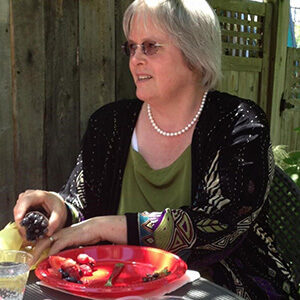 Finally, putting others first also means that we look beyond our own ego, and show willingness to subordinate (though perhaps not completely ignore) its wants and desires. This practice cultivates humility – one of the most essential attributes of leadership. If I see others as equally if not more important than me, I approach service with gratitude and more pureness of heart. One of my mentors, Jan Demers, who I reported to in our organization for 10 years, personifies these attributes. The consummate servant-leader, Jan showed me the value of approaching work, and life, with a deep dedication to service, while maintaining the critical balance of humility and confidence in our own knowledge and abilities.
Finally, putting others first also means that we look beyond our own ego, and show willingness to subordinate (though perhaps not completely ignore) its wants and desires. This practice cultivates humility – one of the most essential attributes of leadership. If I see others as equally if not more important than me, I approach service with gratitude and more pureness of heart. One of my mentors, Jan Demers, who I reported to in our organization for 10 years, personifies these attributes. The consummate servant-leader, Jan showed me the value of approaching work, and life, with a deep dedication to service, while maintaining the critical balance of humility and confidence in our own knowledge and abilities.
A Zen Parable on Service: Bill Murray as Phil Connors in “Groundhog Day.” A final note on the value of service. One of my favorite movies is Groundhog Day starring Bill Murray. It is my dear cousin Ora’s all time favorite, and she refers to it as a “Zen parable,” or story to promote self-reflection and insight, and to illustrate a moral or spiritual lesson. If you haven’t seen it, check it out if you can.
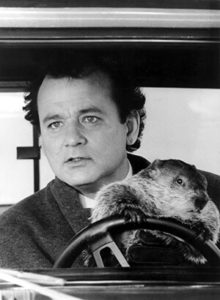 Here is a quick summary (spoiler alert!), details, in part, courtesy of Wikipedia. Bill Murray plays Phil Connors, a self-absorbed television weatherman covering the annual Groundhog Day event in Punxsutawney, Pennsylvania, who becomes trapped in a time loop, forcing him to relive February 2nd (Groundhog Day) repeatedly. Realizing that there are no consequences for his actions, Phil begins spending the “repeating day” indulging in binge eating, a one-night stand, robbery, and other activities, using his increasing knowledge of the day’s events and the town residents to manipulate circumstances to his advantage. Phil gradually becomes depressed and dissatisfied with all of his self-serving activities, and desperate for a way to escape the loop. He decides to use his knowledge of the recurring details of the day to change himself, and orients himself toward serving others. He helps a group of elderly women with a flat tire, saves a man choking in a restaurant, and catches a kid falling out of a tree, among other good deeds. With his transformation from selfishness to service completed, Phil finds true love and happiness, the looping day ends, and he wakes up to a new life on February 3rd.
Here is a quick summary (spoiler alert!), details, in part, courtesy of Wikipedia. Bill Murray plays Phil Connors, a self-absorbed television weatherman covering the annual Groundhog Day event in Punxsutawney, Pennsylvania, who becomes trapped in a time loop, forcing him to relive February 2nd (Groundhog Day) repeatedly. Realizing that there are no consequences for his actions, Phil begins spending the “repeating day” indulging in binge eating, a one-night stand, robbery, and other activities, using his increasing knowledge of the day’s events and the town residents to manipulate circumstances to his advantage. Phil gradually becomes depressed and dissatisfied with all of his self-serving activities, and desperate for a way to escape the loop. He decides to use his knowledge of the recurring details of the day to change himself, and orients himself toward serving others. He helps a group of elderly women with a flat tire, saves a man choking in a restaurant, and catches a kid falling out of a tree, among other good deeds. With his transformation from selfishness to service completed, Phil finds true love and happiness, the looping day ends, and he wakes up to a new life on February 3rd.
Definitely a classic, and a great rom-com. And, an incredible story of embracing service to others as a core value.
4.0 SHOW UP WITH CHARACTER
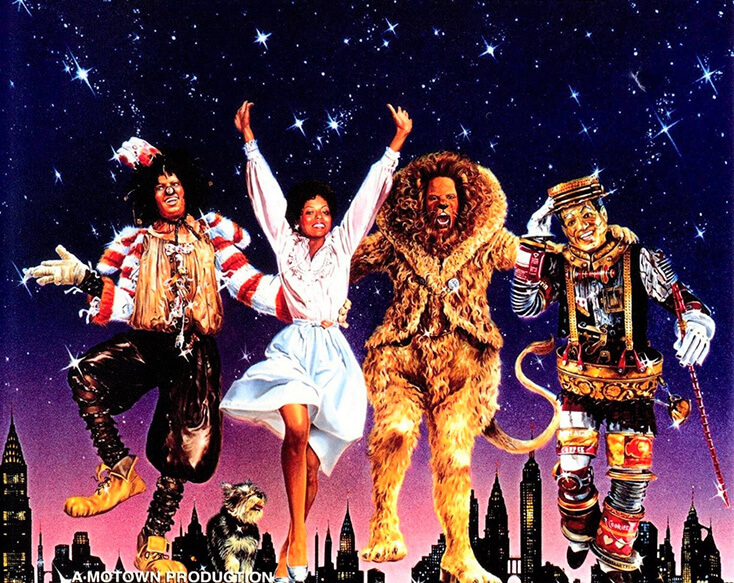
“Be a good person.”
– Jim Stroker –
With good anchoring practices we cultivate inner peace, and with good self-regulation we maintain better balance through challenging situations, and leverage our ability to choose our response. Our fidelity to the values of truth, justice and service helps to inform the responses we choose and is the foundation for how we interact or engage with the external world of circumstances and situations. To some extent, I think that there is a very appropriate expectation that leaders will operate with truthfulness, justice, and an orientation to service. For me, these values form the deeper basis of “character.” On another level, though, character consists of the attributes that are more readily apparent on the surface. These are the attributes that people feel from us on a regular, daily basis.
How do we want to be? How do we want to be “seen”? How do we want to make people feel? Who we try to be, and how we present “externally,” are critically important, particularly in leadership. I’ve noted many times, and confirmed with colleagues, that all eyes are always on the leader, and that the leader’s behavior is, essentially, magnified for everyone around them. As leaders, we provide support and help guide the way, and part of this is striving for and modeling outstanding character and goodness as manifested in our thoughts, words and actions.
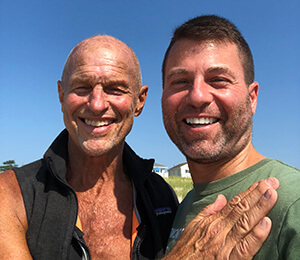 For many years, my in-laws have had a house on Long Beach Island, New Jersey. When we visit during the summer, one of my favorite activities is yoga on the beach with one of my mentors, Jim Stroker. Coach Stroker has spent the last 35+ years as a wellness teacher and coach from Ridgewood, NJ, and is a certified yoga instructor, motivational speaker, and all-around mensch. When he teaches yoga classes, Jim routinely drops gold in the form of wisdom and insight into life. He’ll point out the extraordinary beauty of the natural environment of the beach, and he’ll push us to find our “optimism, gratitude and grit.” One of my favorite moments was when he had a yoga class on the beach and, while we’re doing the asanas (yoga poses), Jim barks out to the group, in his happy, loving way: “BE A GOOD PERSON!” I love it. Isn’t this the simplest and best advice?
For many years, my in-laws have had a house on Long Beach Island, New Jersey. When we visit during the summer, one of my favorite activities is yoga on the beach with one of my mentors, Jim Stroker. Coach Stroker has spent the last 35+ years as a wellness teacher and coach from Ridgewood, NJ, and is a certified yoga instructor, motivational speaker, and all-around mensch. When he teaches yoga classes, Jim routinely drops gold in the form of wisdom and insight into life. He’ll point out the extraordinary beauty of the natural environment of the beach, and he’ll push us to find our “optimism, gratitude and grit.” One of my favorite moments was when he had a yoga class on the beach and, while we’re doing the asanas (yoga poses), Jim barks out to the group, in his happy, loving way: “BE A GOOD PERSON!” I love it. Isn’t this the simplest and best advice?
4.1 THE MODELS AND QUALITIES OF CHARACTER
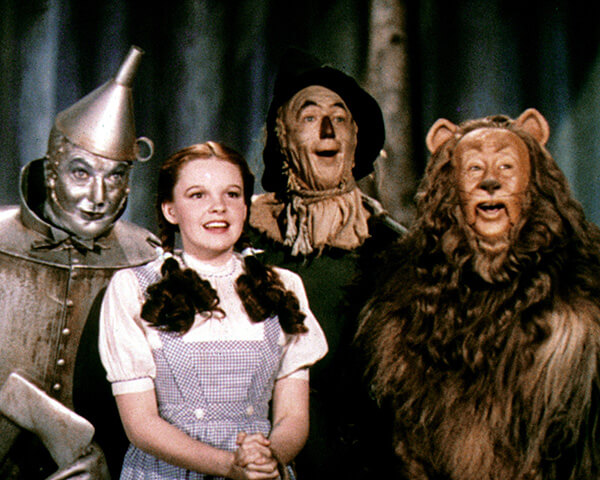
Introduction. When I think about character, and being a good person, I think about how we learn from our elders, and especially from our parents and/or those elders in our lives who have been, or are, like parents to us. It could be that loving aunt or uncle, a grandparent, your in-laws, or that close family friend who has always made you feel loved, valued and safe in every sense. When I think about all of those elders who have functioned for me this way throughout my life, I get a warm and secure feeling inside. How can we emulate the best of the character qualities we’ve had from these people and give those around us that same sort of gift?
The Wizard of Oz – A Lesson for the Ages. To date, the best analogy that I have found to describe these qualities is reflected in The Wizard of Oz. It may seem quaint, but the lessons from the Wizard of Oz are profound, particularly in their application to leadership. Dorothy Gale is the servant-leader of a motley band of individuals, each searching for qualities they already have but do not yet recognize. In her quest to get home, Dorothy works collaboratively with her new friends – and prioritizes their needs – to assure that each will receive from the Wizard the qualities they seek. The Cowardly Lion represents the qualities of being strong and courageous. The Scarecrow represents the qualities of being calm and mindful. The Tin Man represents the qualities of being loving and compassionate. These are the archetypes and qualities of character, and they are all integrated in the form of Dorothy – the consummate helper and servant-leader.
Showing up with character means keeping these three qualities in mind, at all times, as much as possible, and having these qualities guide our thoughts, words and actions. When I feel from you: that you are a person with courage; that you are a person with mindfulness; and that you are a person with compassion; and I feel and perceive these qualities consistently in your externally-observable behavior (words and actions), I get that sense of warmth, security and support that we all need as human beings. And, as with the best of parents or parental figures in our lives, this does not mean affirmation or blanket “approval” for everything I think, say or do. It means respect and support for me as a human being – for my humanity.

4.2 STRONG AND COURAGEOUS
Facing fear, processing, and letting go. Being strong and courageous is not about eradicating every last bit of fear. There is healthy fear and there is unhealthy fear, or, better yet, unhealthy responses around manageable fear. Evolution has wired us this way. The classic, “fear of the Bengal tiger,” is an example of healthy fear which propels us to flee from imminent danger. Confronting the Bengal tiger is not an act of courage, but an act of foolishness which surely will not go well.
 In a conversation about fear and courage, my Uncle David reminded me of a passage in the sci-fi classic, Dune, by Frank Herbert. Dune’s “Litany Against Fear” tells us that, while fear must be dealt with, we process it not by fighting it but by facing it and then letting it go:
In a conversation about fear and courage, my Uncle David reminded me of a passage in the sci-fi classic, Dune, by Frank Herbert. Dune’s “Litany Against Fear” tells us that, while fear must be dealt with, we process it not by fighting it but by facing it and then letting it go:
I must not fear.
Fear is the mind-killer.
Fear is the little-death that brings total obliteration.
I will face my fear.
I will permit it to pass over me and through me.
And when it has gone past I will turn the inner eye to see its path.
Where the fear has gone there will be nothing. Only I will remain.
– Dune by Frank Herbert
I think of courage not as the absence of fear, but about the power of the mind and the heart to commit to and execute a course of action which takes more work – sometimes a lot more work – because an element of fear, or some other hesitation or obstacle, is present. I’ve been to public pools and jumped off the high diving board. Can this activity provoke some fear? Sure. But, assuming that the pool and equipment are in good condition and well-maintained, that I can swim, and that I do not do an incredible belly-flop, the activity is relatively safe and I can work to manage my fear and participate in the activity. As I take the literal and figurative leap, I’ve taken the first steps in facing and processing the fear, and letting it go. And, I may find that by the tenth time I jump off that diving board, the fear has diminished considerably. What little remains becomes part of the enjoyment of the activity, not unlike other potentially “scary” experiences like riding a rollercoaster at an amusement park, along with a sense of accomplishment in overcoming fear.
Pushing beyond perceived limitations or challenges. Being strong and courageous is not only about working through fear based on physical safety, but about rising to the challenges before us. It’s about looking at a situation or circumstances differently, considering the approach we will take to the situation, and then working hard – sometimes really hard – to overcome and prevail. It takes determination and grit!
The “fear” in many of these situations is not so much concern around physical safety (as with the Bengal tiger or jumping off the high dive), but concern that the perceived limitations or challenges are insurmountable or that we will fail and be judged poorly by others. Many of us get anxious with activities such as public speaking. Performers in sports or the arts – music, dance, acting – likewise can get these types of jitters. I think that we can, with some work, overcome the debilitating aspect of these fears and actually use the fear to our advantage to keep us frosty and on top of our game. Sometimes, before I provide a training session or presentation, someone will ask me, “Are you nervous?” My usual response is: “Yes, but it’s a healthy nervous!” I’m not saying this is easy – just the opposite, it takes major work. I saw a piece on Jane Goodall who, in her eighties and after decades in the public spotlight, still gets the jitters before she speaks in public. What does she do? She runs around and gets a mini, cardio workout minutes before she speaks. This is her work to enhance her own courage – to activate the will of her mind and heart – and push beyond her perceived challenge in public speaking.
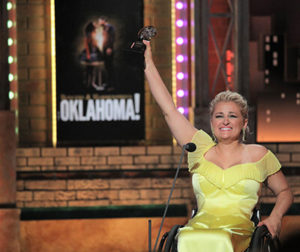 My friend and mentor, Jim Stroker, is the dad of Ali Stroker, the first wheelchair user in history to win a Tony Award. In Ali’s acceptance speech for the Tony, she dedicated the award to “every kid who is watching tonight who has a disability, who has a limitation or a challenge.” And what is Ali providing to kids around the world?
My friend and mentor, Jim Stroker, is the dad of Ali Stroker, the first wheelchair user in history to win a Tony Award. In Ali’s acceptance speech for the Tony, she dedicated the award to “every kid who is watching tonight who has a disability, who has a limitation or a challenge.” And what is Ali providing to kids around the world?
Encouragement.
Ali’s achievements and success come as no surprise to me. One of her dad’s inspirational quotes that I have heard him say numerous times…
“Impossible is impossible until it’s done!”
– Jim Stroker –

©Burlington Free Press — USA today network
“Never get discouraged.” When I first arrived in Burlington, Vermont in 1994, there was (and still is) a thriving street scene on Church Street – the location in town geared to pedestrians and lined with shops and restaurants, and entertainers and street musicians or “buskers.” Upon my arrival in 1994 and, to my knowledge, for many years prior, one of the most notable street musicians was Richard Haupt, better known as “Richard the Clarinet Man.” Richard was a diminutive fellow, probably in his late fifties, and he performed primarily solo, slightly imperfect versions of classic jazz tunes such as “When the Saints Go Marching In.” He was one of the most notable icons in Burlington and, like a postal carrier, neither rain, nor wind, nor the long, chilly Vermont winters could dissuade Richard from his daily ritual.
I had relocated to the Burlington area to open a coffee shop, and I got to know many of Vermont’s musicians who would come to the coffee shop to perform or see other performers. It was like a scene out of Greenwich Village in the 1950s or 1960s and I loved it. Richard eventually found his way to the shop and quickly became a regular, playing music and hanging out for hours on end. He didn’t drive and, at the end of the night, I would often drive him home to his mobile home in Colchester, VT. We had a nice relationship, and he shared with me his lifelong dream of being a street musician in New Orleans. I believe it was some time in 1996, and Richard took the courageous step of moving himself to New Orleans and pursuing his dream. Within maybe a year of that move, he passed away.
When he was still living in Vermont, Richard had shared with me one of the key lessons of his life: “Never get discouraged.” It made a deep impression on me, as did Richard by his example. Of course, from time to time we all get discouraged, but I take from it this. There will be failure and there will be setbacks. But, we should never allow these to dis-courage us – that is, deprive us of our courage to get back up, dust ourselves off, and work to overcome. Thank you, Richard, my friend.
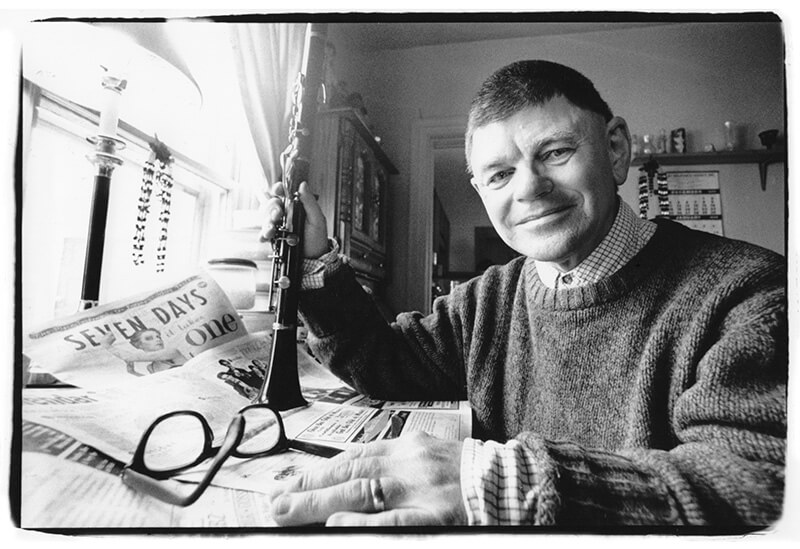
Photo credit: Matthew Thorsen
4.3 CALM AND MINDFUL
Mahatma Gandhi, “Gandhiji” as he’s referred to with reverence in India, led millions in nonviolent resistance in overcoming colonial British rule, and set India on the path to independence as a nation. With measured calmness, he inspired civil rights movements and human rights crusades around the world. Gandhi’s principle, and example, of nonviolent, civil disobedience established the blueprint for human rights leaders in the latter part of the twentieth century, including Martin Luther King Jr. and Nelson Mandela.
Gandhi’s enormous accomplishments, and some of his extraordinary abilities as a leader, are attributable to his focus on calmness and mindfulness. To defy one of the preeminent, imperialist powers on the planet, and liberate India from colonial rule, Gandhi had to have the ability to use calmness of mind, rather than the force of physical violence. He had to employ mindfulness in visualizing what many would have deemed impossible, and use the powers of mindfulness to inspire and lead a nation of millions in the quest for national independence. And, Gandhi noted that these qualities of calmness and mindfulness are key ingredients to fearlessness or, as I call it, courage.
“Fearlessness does not mean arrogance or aggressiveness.
That in itself is a sign of fear.
Fearlessness presupposes calmness and peace of mind.”
– Gandhiji–
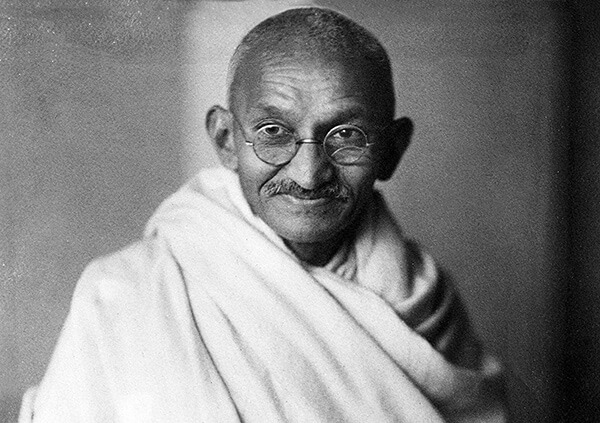
Gandhi also provided tremendous insight into the power of the mind, and of our thoughts, in actualizing and realizing who we are and who we can become, noting, “A man is but a product of his thoughts. What he thinks he becomes.” Finally, while we often place great emphasis on the external behaviors of what we say and do, Gandhi offered a testament to the benefit of alignment among our thoughts, words, and actions: “Happiness is when what you think, what you say, and what you do are in harmony.” At the risk of embellishing on this sage wisdom, I would note that “harmony” here refers both to the alignment of our thoughts, words and actions, and that they are centered around the well-being of others and our planet.
4.4 COMPASSIONATE AND LOVING
“Everyone longs to be loved.
And the greatest thing we can do is to let people know
that they are loved and capable of loving.”
– Fred Rogers –
Okay, I’m going to date myself, but I grew up with the launch of Sesame Street and its spin-off, The Electric Company, as well as the time-honored classic, Captain Kangaroo. But the children’s program of my childhood which holds a special place of kindness for me is Mister Rogers’ Neighborhood. If you haven’t seen the 2018 documentary, Won’t You Be My Neighbor? about the life and philosophy of Fred Rogers, the host and creator of Mister Rogers’ Neighborhood, I’d highly recommend it.
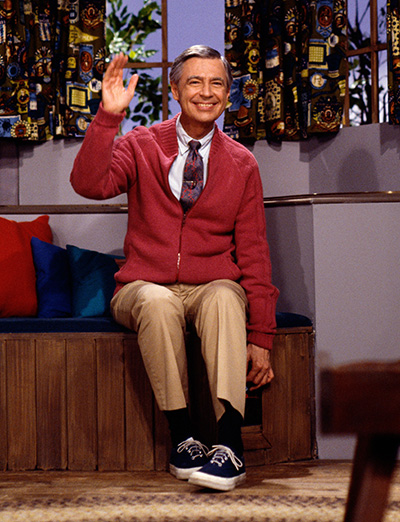 Mister Rogers’ Neighborhood ran for 33 years and, by all accounts, the show, and its creator, were extraordinary. With a bachelor’s degree in Divinity and graduate work in Child Development, Fred Rogers brought his gentle, loving demeanor to his work in children’s programming, and received enormous accolades including the Presidential Medal of Freedom, a Lifetime Achievement Emmy, and induction into the Television Hall of Fame. He was ahead of his time in focusing on the social and emotional development of children, and in addressing and demystifying issues – such as death and disaster – based on children’s concerns. Even amidst the tragedy of 9/11 in the U.S., the wisdom of Fred Rogers was widely quoted: “When I was a boy and I would see scary things in the news, my mother would say to me, “Look for the helpers. You will always find people who are helping.” To this day, especially in times of “disaster,” I remember my mother’s words and I am always comforted by realizing that there are still so many helpers – so many caring people in this world.”
Mister Rogers’ Neighborhood ran for 33 years and, by all accounts, the show, and its creator, were extraordinary. With a bachelor’s degree in Divinity and graduate work in Child Development, Fred Rogers brought his gentle, loving demeanor to his work in children’s programming, and received enormous accolades including the Presidential Medal of Freedom, a Lifetime Achievement Emmy, and induction into the Television Hall of Fame. He was ahead of his time in focusing on the social and emotional development of children, and in addressing and demystifying issues – such as death and disaster – based on children’s concerns. Even amidst the tragedy of 9/11 in the U.S., the wisdom of Fred Rogers was widely quoted: “When I was a boy and I would see scary things in the news, my mother would say to me, “Look for the helpers. You will always find people who are helping.” To this day, especially in times of “disaster,” I remember my mother’s words and I am always comforted by realizing that there are still so many helpers – so many caring people in this world.”
What really resonates through the years is that Fred Rogers – and his warm, gentle, friendly, welcoming persona – was not playing a role in his show. On and off screen, this is who he was. He literally lived the philosophy of being a good neighbor, and showing kindness, empathy and compassion to everyone around him. He said, “To love someone is to strive to accept that person exactly the way he or she is, right here and now.” This is love and compassion – striving to accept each other as we are, flaws and all. And not just to accept, but to find and affirm the good.
“So the greatest thing we can do is to find what is healthy and laudable about somebody else and reflect that to them….
It’s a large assignment, to be able to help people look deep within themselves and find what is wonderful in there, because at the core of everyone is something wonderful…”
– Fred Rogers –
5.0 ENGAGE WITH COMPASSION

When I first called this final section, “Engage with Compassion,” what I meant was that, when we engage with others, we must bring a cooperative mindset to our interactions and communication which prioritizes care for others and unconditional compassion. This, in turn, helps to optimize the benefit for those we interact with. It still means this to me, although I’ve recently thought about another, and perhaps equally important, dimension to this phrase and idea which I’ll introduce as follows: “Engage. With Compassion.” What I mean by this is that it’s not only about bringing compassion to the interaction. It’s about actively initiating engagement. And, assuring that, when we engage, we do so with compassion. Stated otherwise, “Love is a verb.”
Of course, in many instances, others will initiate engagement with us, and it’s important that we bring compassion to those interactions. But the newer concept for me is that we need to be active caretakers of others and our planet, and that means taking the first step – initiating active, caring interactions with our fellow human beings as often as we can. This takes courage and, in the parlance of one of our great, modern thinkers around leadership – Brené Brown – it takes vulnerability. In initiating interactions with compassion and caring, we may or may not have those qualities reciprocated to us. This does not diminish the importance of having the courage and vulnerability to put ourselves out there and initiate engagement with others geared toward nurturing and uplifting them as human beings. In the moment, whether or not we receive back what we give, we engage. We lead. With compassion.
5.1 INTERDEPENDENCE AND COOPERATIVE MINDSET
Engaging with compassion is one of the hallmarks of being a good person, and it is the gold standard of leadership. The reason for this is that engagement – or human interaction or communication – is the essential building block of relationships, connection and trust.
The place I like to begin with these concepts is cooperative mindset. When we work on the four preceding practices – getting anchored, self-regulating, following the core values, and demonstrating character – these practices lead us to a sense of human interdependence and the cooperative nature of our being. I see the path of human maturation as follows. We begin as babies and become children and youth, and begin our lives and its early stages completely dependent on those around us. As we become young adults, we begin to “stand on our own two feet” and grow into greater independence – we can do for ourselves. With a bit more age and experience, we arrive at interdependence – we have adult capabilities and, when we as individuals put those capabilities together and live cooperatively, we do more not only for ourselves, but we do more for others. The whole is much greater than the sum of its parts. This highest level of giving and receiving provides us with a richer, deeper, more meaningful and more powerful experience. It enables us to reach our greatest potential – as a team – and provides the firmest foundation for us to work toward the well-being of humanity and our planet.
There is a mantra in the field of early care and education, “It’s all about relationships,” and it’s true. I see relationships as a function of the mind and the heart. If you and I have a relationship, I think of it as (1) our shared understanding of (2) how we generally interact. Good relationships typically involve a shared perception, of both parties, that we interact really well. That perception is based on an established pattern of good, interpersonal communication dynamics. The interdependent or cooperative mindset helps us: to understand the purpose of communication in nurturing others; to prioritize compassion in our interactions; to work towards unconditional compassion for all people; and to engage in ways that more readily convey that compassion to others. When we accomplish these things, we build relationships, connection and, that most coveted prize, trust. And, again, the trust needed for great leadership – and to build a better world – begins with cooperative mindset and engaging with compassion.
5.2 THE PURPOSE OF COMMUNICATION
The practice of engaging with compassion is deeply linked with how we conceptualize the purpose of communication, and how that thinking informs the way in which we communicate and engage with others. On the surface, communication seems to be simply about conveying information, or the exchange of content. That is, it seems to be about practical support for the functioning of our lives. “What time is dinner tonight?” “Let’s eat at 6:00pm.” But, let’s start at the very beginning…a very good place to start…
Infancy: Serve and Return. In my many years working with Head Start, I learned a lot about early childhood. One of the most fascinating and illuminating phenomena I came to understand is called, “Serve and Return.” This idea essentially describes the “conversation dynamics” between infants (or very young children) and their adult caregivers (parents or others). Although our brains are hard-wired for language acquisition, upon birth, we do not yet have advanced verbal language skills. Without advanced verbal language, babies and their caregivers employ a different set of practices in which the baby “verbalizes” and physically communicates, to the best of the baby’s ability, in efforts to meet the baby’s needs and support growth. The adult responds with more developed verbal and physical communication to meet the baby’s needs and to build relationship and connection.
Under the auspices of the National Academy of Sciences, Jack P. Shonkoff, M.D. led a blue-ribbon committee that produced the landmark report in 2000, From Neurons to Neighborhoods: The Science of Early Childhood Development. Dr. Shonkoff is the Founding Director of the Center on the Developing Child at Harvard University, which provides the following, excellent descriptions of Serve and Return. In order to help convey this concept and its importance, I like to present this information from the Center on the Developing Child in two modalities – “warm interactions” and “cold interactions.”
Serve and Return: Warm Interactions
- Serve and return interactions shape brain architecture. When an infant or young child babbles, gestures, or cries, and an adult responds appropriately with eye contact, words, or a hug, neural connections are built and strengthened in the child’s brain that support the development of communication and social skills.
- When caregivers are sensitive and responsive to a young child’s signals and needs, they provide an environment rich in serve and return experiences. Healthy brain architecture depends on a sturdy foundation built by appropriate input from a child’s senses and stable, responsive relationships with caring adults.
Serve and Return: Cold Interactions
- Because responsive relationships are both expected and essential, their absence is a serious threat to a child’s development and well-being. If an adult’s responses to a child are unreliable, inappropriate, or simply absent, the developing architecture of the brain may be disrupted, and subsequent physical, mental, and emotional health may be impaired.
- The persistent absence of serve and return interaction acts as a “double whammy” for healthy development: not only does the brain not receive the positive stimulation it needs, but the body’s stress response is activated, flooding the developing brain with potentially harmful stress hormones.
Dr. Edward Tronick is Director of the Child Development Unit and Distinguished Professor at the University of Massachusetts Boston, and Associate Professor at the Graduate School of Education and the School of Public Health at Harvard University. One of the best examples of Serve and Return in the context of both warm interactions and cold interactions is provided in the famous “Still Face Experiment” conducted by Dr. Tronick. In the experiment, a mother and baby begin with a warm interaction in which the mother provides caring and loving responses to the baby’s verbal and physical gestures, to which the baby responds very positively. Next, the mother puts on a “still face” and does not respond to the baby’s verbal and physical gestures, and the baby quickly gets agitated and experiences distress. It is a profound, albeit a bit unsettling, example of human response to warm or cold interactions.
The foundational purposes of communication. The work around Serve and Return sheds light on a notion that has implications far beyond early childhood. This notion is that the very foundational purposes of communication and engagement are to:
- Nurture and support our development and well-being
- Support our physical and mental health
- Promote stress reduction and joy
I would suggest that these remain the purposes of communication and engagement both in the earliest stages in our lives, and throughout our entire lifespan. We are hard-wired to give and receive compassion, and this is done through communication and engagement.
5.3 “VIBE BEFORE CONTENT”
Interpersonal communication is typically a spoken exchange that takes place between two or more individuals on a personal, face-to-face basis. Interactions can take place in person or, oftentimes in today’s world, via Zoom or other web-based applications. The global pandemic of 2020 and after, however, brought home just how special it is to be together, physically and in person. A major part of the magic is having a wide range of communication elements available to us, and more than we may have with telephone calls, texting, email, or web-based applications. Since the onset of the pandemic, when I’ve seen family, friends or colleagues in person, I often remark on what a joy it is to be with people in three dimensions!
In situations where there are both auditory and visual components, we communicate with words, as well as with our eyes, facial expressions, affect, tone of voice, body language, and perhaps other cues. All of these elements provide a rich array of communication abilities and opportunities. The parties exchange content in a volley of back and forth, back and forth. You speak, I speak, you speak, I speak. But the secret ingredient to our communication and interaction is the feeling, the tone, the climate we create. THE VIBE.
Did you ever have an argument or disagreement with someone – a family member, friend, colleague, acquaintance – and, years later, you still have some negative feeling associated with that event but, for the life of you, you simply cannot remember what the discord was about? The “content” is long gone, but what remains is the vibe. Maya Angelou, in her genius, summarized it this way:
“I’ve learned that people will forget what you said,
people will forget what you did,
but people will never forget how you made them feel.”
― Maya Angelou ―

©Chester Higgins Jr. All rights reserved.
What’s interesting is that, although people will forget what we did and said, it is precisely what we did and said that leaves those lasting feelings, good or bad. Don’t get me wrong, content is important and can, in some moments, be paramount. I think of urgent health or safety situations, or an emergency in which someone shouts, “Fire! Get out of the building!” No need to nurture me in that moment, thank you, I appreciate that content must override here (although the vibe will certainly also convey the urgency). But, in most situations, the vibe should be considered first. Not “only,” but first.
No matter how strong we are, human beings are fragile. We are like young plants in a vegetable or flower garden that need constant nurturing, at all ages through the lifespan. Food, clothing, shelter and compassion are our water, air, soil and sunlight. From a very young age, we learn the concept of sensitivity and “hurt feelings.” And here it is. If, when you and I interact, I neglect the vibe – I neglect the Prime Directive of engaging with compassion – the content is more likely to be lost. If I’m trying to be helpful and giving you the most sage wisdom on the planet, and I do so without taking great care and consciousness around treating you with compassion, the likelihood of you “hearing” and absorbing the content is greatly diminished. And, I also run the risk that you will come away from the interaction with negative feeling, and that feeling may persist long after. Lose, lose, lose. The irony is that I was motivated to share some wise content for your benefit or well-being, but that motivation did not extend to making sure, in my execution, that you felt deep care and compassion from me. Stated another way, in our interactions, vibe must be the forethought and not the afterthought.
A final note on vibe before content. Some years ago, I was at a conference and met Dr. Chin Reyes with the Edward Zigler Center in Child Development & Social Policy at the Yale School of Medicine. Chin was presenting on a tool called the Climate of Healthy Interactions for Learning & Development (CHILD) (Gilliam & Reyes, 2017), which is a comprehensive observational assessment of the mental health (or social and emotional) climate of early care and education settings. I had been thinking for years about the concept of vibe before content, and here it was in an academic, research-based approach to early care and education. I invited Chin and her colleagues to work with my Head Start program to learn more about this approach. I’ll oversimplify here, but Chin explained essentially that, in early care and education settings, caregivers can create a spectrum of positive, neutral or negative climates. Intuitively, we can understand that positive climates have favorable impacts for young children and that negative climates have detrimental impacts for young children. What struck me, though, was that “neutral” climates – not really tipping overtly toward positive or negative, but somewhat bland and unengaged – are also unfavorable for young children. It’s sort of like the Still Face experiment – not doing active harm, but doing harm by virtue of being unengaged and disconnected. Neutral is not good enough.
 Children, and all of us, are fragile beings. We don’t stomp on the flowers in our garden, but it’s not enough to do nothing. We need to provide active compassion and caring. This is the vibe.
Children, and all of us, are fragile beings. We don’t stomp on the flowers in our garden, but it’s not enough to do nothing. We need to provide active compassion and caring. This is the vibe.
5.4 UNCONDITIONALITY
Who deserves our unconditional compassion? Who gets our complete, unconditional compassion? I’ll tell ya who. Our babies and our animals, that’s who. We find it easy to lavish all of our unbridled, 100% unlimited, unconditional love and compassion on the babies and animals closest to us in our lives. They get the absolute best we have to give, probably more consistently than anyone else in our lives. And, here is the thing. We need to give to all – to everyone – what we give to our babies and our animals. I understand the magnitude of this challenge.
The task here is to understand and embrace the idea that it is not about others being “deserving” of our unconditional compassion. Is a baby really “deserving”? Is my cat really “deserving”? Are the sunflowers in my garden really “deserving”? It is our ego which sits in judgment of others and deems others either more or less deserving of the very best of us. But, the sunflower gives its beauty to all around it. It makes no judgment that its beauty should be given more to some and less to others. Yes, it takes extraordinary work to move toward unconditional compassion for all, including those we initially deem less deserving. But, I would suggest that “conditional compassion” is a major stumbling block in our journey of evolution as a humanity. As we judge others to be less than worthy of our full compassion, we put less kindness into the world. When billions of people operate this way, that’s a lot of kindness lost.
Finally, when we operate with “conditional compassion,” we are basically defining ourselves in terms of our judgments of the worthiness of other people. Think of it this way. Around me are people 1, 2, 3 and 4. My impression of person 1 is that she’s one of the kindest and most thoughtful people I know. Persons 2 and 3 – meh, they’re okay, but sometimes a bit lukewarm. Person 4, he’s a bit of a sourpuss. If I interact with these folks by giving 100% of my compassion to person 1, 75% of my compassion to 2 and 3, and 50% of my compassion to person 4, I’m “averaging” 75% in terms of embodying compassion. In that case, that’s who I am – a person with Grade C level compassion. Alternatively, I can strive to give each 100% compassion and, by so doing, define myself on my own terms, and not in relation to my judgments of others. This is how we actualize our best selves and reach our fullest potential.

“A Tail of Two Cats.”
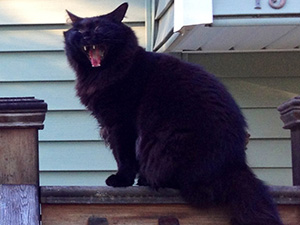 I have two cats, and they’re both somewhat senior citizens at this point. Midnight is the mama, and Ozzie is her son. Midnight is, perhaps, the sweetest cat on the face of the planet. She warms up to new people fairly quickly and, once she gets to know you, her operating mode is snuggle, purr, cuddle, purr, repeat. She is an unabashed love bug, 24/7. She’s the kind of cat that has barely had a hissy or scratchy moment around people her entire life.
I have two cats, and they’re both somewhat senior citizens at this point. Midnight is the mama, and Ozzie is her son. Midnight is, perhaps, the sweetest cat on the face of the planet. She warms up to new people fairly quickly and, once she gets to know you, her operating mode is snuggle, purr, cuddle, purr, repeat. She is an unabashed love bug, 24/7. She’s the kind of cat that has barely had a hissy or scratchy moment around people her entire life.
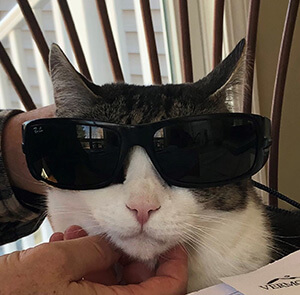 Ozzie is a big, bruiser of a dude who also loves to be loved. He’s definitely a bit more skittish than Midnight, but he also loves to be petted and scratched. If I pet Ozzie the wrong way though, or in the wrong moment, he’ll take a swipe at me with his claws or go into mountain lion mode like he’s going to bite my hand off. He really is a sweet fellow, albeit sometimes a bit misunderstood. And, luckily for me, he’s slowing down a bit in his elder years and those cat-like reflexes are not quite as fast and don’t exact the same toll on me that they used to.
Ozzie is a big, bruiser of a dude who also loves to be loved. He’s definitely a bit more skittish than Midnight, but he also loves to be petted and scratched. If I pet Ozzie the wrong way though, or in the wrong moment, he’ll take a swipe at me with his claws or go into mountain lion mode like he’s going to bite my hand off. He really is a sweet fellow, albeit sometimes a bit misunderstood. And, luckily for me, he’s slowing down a bit in his elder years and those cat-like reflexes are not quite as fast and don’t exact the same toll on me that they used to.
Which cat do you think is my favorite? Well, maybe you’re right, but I realized long ago that these are my kitties and I need to give both of them 100% unconditional love and compassion. It’s not about being deserving. It’s about the fact that living things – all of us – in our wonderful imperfection, need abundant nurturing and compassion. The same goes for our children, our parents, and others. We may feel more affinity for one, or some, and feel less affinity for others. But we must give 100% to all. Again, a tall order, I know, but crucially important.
Put the greatest effort into building communication and relationship with those we find most challenging. I learned in the field of early care and education that, when a very young child presents with behavioral issues (hitting, swearing, etc.), it’s vitally important that we not judge the child as a “bad” child. Rather, it’s critical that we maintain compassion for the child and see these behaviors as a reflection of the child’s unmet needs, or as the result of trauma or Adverse Childhood Experiences or “ACEs.” Likewise, we should consider the same notion with adults with behaviors (or personalities) we may find challenging to us. We have all had our hardships and each of us is on our own healing journey. We must work to cultivate empathy for others even if we do not know or see the hardship behind the personality.
When I worked for Head Start and we had new employees come on board, in orientation I would often ask, especially of new teaching staff, “Are you skilled in working with children with challenging behaviors?” They’d answer with a chorus of, “Yes!!” I’d then ask, “How about working with adults with challenging behaviors?” Answer: “Ummm…” I’d then tell the following story from when I was in college and working in a restaurant waiting tables. There was a fellow who worked in the back of the restaurant – I’ll call him “Al” – and he was the dishwasher. 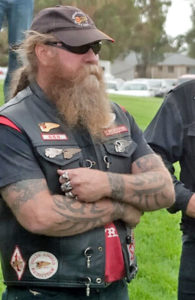 Al had a gruff personality and went out of his way to act intimidating, occasionally growling at the other staff and, when not working, decked out in classic black leather and metal, biker-style garb. People tended to keep their distance. I was a young, naïve 22-year-old and did not quite get Al’s behavior, but figured I’d be friendly toward him, albeit from a distance. Me: “Hey Al, thanks for getting those salad bowls ready for me.” Al: “Grrrrr.” Me: “Hey Al, nice work tonight, we were slammed all night but you were on it!” Al: “Yeah. Right. Whatever.” I don’t know when it happened, but over a very short period of time, although he was still gruff toward almost everyone else, Al started to warm up to me and, then, became downright nice to me. Although we were never best friends, I got to know him a bit and learned that he had experienced a very rough childhood. His mean and tough exterior was a defense mechanism to not let others in so as to avoid being hurt. But, deep inside that tough exterior, there was a very wounded but genuinely good and decent human being, with a greater need for compassion than most.
Al had a gruff personality and went out of his way to act intimidating, occasionally growling at the other staff and, when not working, decked out in classic black leather and metal, biker-style garb. People tended to keep their distance. I was a young, naïve 22-year-old and did not quite get Al’s behavior, but figured I’d be friendly toward him, albeit from a distance. Me: “Hey Al, thanks for getting those salad bowls ready for me.” Al: “Grrrrr.” Me: “Hey Al, nice work tonight, we were slammed all night but you were on it!” Al: “Yeah. Right. Whatever.” I don’t know when it happened, but over a very short period of time, although he was still gruff toward almost everyone else, Al started to warm up to me and, then, became downright nice to me. Although we were never best friends, I got to know him a bit and learned that he had experienced a very rough childhood. His mean and tough exterior was a defense mechanism to not let others in so as to avoid being hurt. But, deep inside that tough exterior, there was a very wounded but genuinely good and decent human being, with a greater need for compassion than most.
I’d tell this story to new employees and then request that, in their work-world in the years to come, they consider who among their colleagues they might think of as their most challenging colleague. And then, once they identified that most challenging colleague, they put their greatest energy into building communication and relationship with that person. I’d explain that when we don’t make this effort or, worse, when we reciprocate unkindness, we essentially validate the challenging person’s behavior. To my old co-worker, Al, those who ignored him or looked down on him deserved his gruffness. When faced with compassion, he had to reevaluate his operating mode, at least with me. And that space allows for growth and healing.
Behind challenging behavior and personalities are unmet needs, hardships, ACEs, trauma. We must bring the empathy. Years ago, I asked my boss and mentor, Jan Demers, about her approach to working with challenging people, and she said, “A gentle word turns away wrath.” Sage advice. It inspires me to strive to bring the character of courage, mindfulness and compassion – emotional intelligence – to all of my interactions, with everyone, to the best of my ability.
At the end of the day, the “undeserving” need more and better from us, not less. I read somewhere that when we observe something of profound beauty in nature – a sunrise, sunset, the ocean, a majestic bird in flight – we feel a deep, deep sense of appreciation and wonder. What if we considered every human being with that same sense of gratitude, wonder and compassion?
5.5 PADDLE BALL COMMUNICATION
In today’s world, sometimes it seems that we have lost the ability to agree to disagree in an agreeable manner. Many have observed the breakdown in civil discourse among those with different political orientations or policy positions. And, even among friends and family, and those with very similar world-views, communication can often descend into a thinly-veiled, occasionally prickly, adversarial mode. I sometimes think of it as a contest of the egos disguised as a contest of the intellects. It seems that in our quest to be right, we sometimes forget the importance of being kind.
 Tennis, anyone? Some years back, I was invited to be the keynote speaker at a conference for Vermont Family Matters. It was at this event that I first presented some of my concepts around communication dynamics. I began my keynote by showing a video clip very similar to this one. I then went on to talk about how, too often in our world and in our culture today, communication is like tennis.
Tennis, anyone? Some years back, I was invited to be the keynote speaker at a conference for Vermont Family Matters. It was at this event that I first presented some of my concepts around communication dynamics. I began my keynote by showing a video clip very similar to this one. I then went on to talk about how, too often in our world and in our culture today, communication is like tennis.
 With all due respect to the magnificent Serena Williams, and all of the legendary greats of the sport, tennis is, of course, by nature, a competitive activity. The object is to win. And, especially at the professional level, it can be downright intimidating, with the ball flying at well over 120 miles per hour, and opponents occasionally letting loose with apocalyptic shrieks with each volley. Stressful? Um, yeah. And how do you win? You hit the ball, in bounds, where your opponent cannot successfully return the volley.
With all due respect to the magnificent Serena Williams, and all of the legendary greats of the sport, tennis is, of course, by nature, a competitive activity. The object is to win. And, especially at the professional level, it can be downright intimidating, with the ball flying at well over 120 miles per hour, and opponents occasionally letting loose with apocalyptic shrieks with each volley. Stressful? Um, yeah. And how do you win? You hit the ball, in bounds, where your opponent cannot successfully return the volley.
A different game: Paddle Ball. There is a very different “racket sport” known as paddle ball. Paddle ball is often played on the beach, and a typical game of paddle ball looks like this. Basically, the game usually involves two people, and each has a small paddle ball racket.  The players hit a small rubber ball back and forth, and often try to keep the volley going as long as possible. Doesn’t it sound like a gripping, extraordinary, edge-of-your-seat event? Well, not really, and it likely will not be an Olympic sporting event any time soon. But that’s not the point. It is simply one of the most fun and enjoyable games you can play, for all ages, and you can hardly suppress the smiles and giggles when you play.
The players hit a small rubber ball back and forth, and often try to keep the volley going as long as possible. Doesn’t it sound like a gripping, extraordinary, edge-of-your-seat event? Well, not really, and it likely will not be an Olympic sporting event any time soon. But that’s not the point. It is simply one of the most fun and enjoyable games you can play, for all ages, and you can hardly suppress the smiles and giggles when you play.
What makes it work? The simple beauty of the game of paddle ball is that, unlike competitive tennis, paddle ball is not a win/lose activity. Its sole purpose is for everyone to feel good and enjoy the game. It is supportive, it is cooperative, and it’s fun. And, the really amazing thing about it is that everybody wins.
Communication and engagement can be like paddle ball – what I call, “paddle ball communication.” And, when we bring the paddle ball approach to our communication and engagement with others, the experience can be truly wonderful.
Paddle Ball
Mindset and intention. What is the mindset I bring to the activity? In paddle ball, I come to the game with the intention of engaging in a supportive, cooperative, enjoyable experience.
Make it easier for the other person. In paddle ball, I strive to set up and make shots that make it easier for my partner to return a successful volley. For example, I try to hit and send the ball within a zone that my partner can easily reach.
Thoughtful and well-timed response. When I put more focus and effort into how I return my partner’s last shot, it makes it easier for my partner to return the volley, and also creates a synergy where my partner feels affirmed that they are playing well. Perhaps I time my shot to try to slow down the speed of the volley, for example.
Keep the volley going. In paddle ball, I’m trying to keep the ball in the air. Gentle, upward strokes can help to keep the volley going.
Compensate for my partner’s bad shots. In paddle ball, inevitably one of us will make a “bad” shot – too fast, outside an easily reachable zone, etc. I can make an extra effort to return a poor shot from my partner and get the game back on track.
Dive in the sand. There may be moments where my partner’s last shot was wildly out of the reachable zone for me. I may make a heroic, even if unsuccessful, effort to return the volley by falling over backward or diving in the sand to try to return the shot.
Communication
I can approach my interaction and engagement with a mindset of compassion, support and cooperation. The intention can be the uplifting of other individuals as well as the exchange of information.
I can structure my communication in ways that increase the comfort of the other person, and make it easier for them to respond. Vibe before content – I can use words as well as all of the non-verbal communication tools (eyes, tone, smile, etc.) to set the other person at ease and create a more comfortable climate in which they can respond.
I can provide thoughtful and well-timed acknowledgement of my partner’s communication. I can offer validation with a simple, “yes,” or “okay,” or warm eye-contact with a smiling, engaged nod. (Have you ever had a conversation where these “little validations” are missing? It’s disheartening when we don’t get the cues that let us know we’ve been heard.)
I can work to stay focused on the vibe, even if the content may be challenging. In other words, even and especially with difficult conversations, it’s critical that I stay engaged and show care and concern for the other person.
There may be moments in my interaction with another where the person is not focused, or loses focus, on the vibe, and says or does something which does not feel compassionate or cooperative. I can do my best to soften and redirect us back to a better vibe. “A gentle word turns away wrath.”
When interacting with another, and that person’s communication really misses the mark, I may make a stumbling but well-intentioned effort to normalize the moment, even if unsuccessful and somewhat awkward for me. This is humility.
When people play paddle ball and work very hard to have a mutually supportive, cooperative, enjoyable game, another thing happens. We become inspired by each other’s efforts. When I see you work hard to set up good shots for me, compensate for my bad shots, dive in the sand and so forth, it inspires me to give more effort to the game and to perform better myself. So it is with communication and engagement.
Commit to continuous improvement. Finally, it’s important that we work continuously to improve our communication and engagement skills so as to be geared toward compassion. The fact that I’ve been communicating all my life does not, by itself, make me a great or compassionate communicator. We don’t get better automatically, but only with intentionality and a personal commitment to work hard and to be better over time, and failure is part of the process. We all make mistakes and we can learn from our mistakes and take them as lessons and opportunities for improvement. It is a journey, and it is the right journey.
5.6 COMPASSION AS THE DEFAULT MODE 24/7
I’m an optimist by nature. Not a pie-in-the-sky Pollyanna, but just a good ole, garden variety optimist. I’ve had conversations with family and friends many times about the current state of humanity and the future state of humanity. My thinking is this. As my life has bridged the 20th and 21st centuries, my perception is that humanity is still growing, changing, evolving and maturing. We’re not back in the stone ages with woolly mammoths and such, but that period was not that long ago in the grand scheme of time. Given this, my thought is that, in our journey of human evolution, humanity is, at best, in its adolescence in our overall journey of maturation as a species. Even with the challenges in our world today, in my optimism, I like to envision a better tomorrow for us and for our beautiful mother Earth. I like to visualize humanity, and our planet, thousands if not millions of years into the future, and see a more evolved humanity, centered around peace and compassion, and a thriving, vibrant planet Earth, stewarded by a global humanity of caretakers.
I had this moment at one point within the past few years. I was thinking about the concept of engage with compassion and it hit me. This is who we are supposed to be. This is the birthright of humanity and who we are supposed to be. Not once in a while, not for some and not others, but, to the best of our ability, to grow and evolve into people who shine like the sun, all the time and for everyone. The destiny of our evolution, as caretakers of humanity and our planet.
And so, what if all of us – everyone on earth:
- Cultivated a mindset of cooperation and interdependence
- Set out to develop deeper human connections, relationships and trust
- Recognized the foundational purpose of communication: to nurture and support our development and well-being; to support our physical and mental health; and to promote stress reduction and joy
- Prioritized vibe before content in our communication and engagement
- Brought unconditional compassion, and put in the greatest effort with those we find most challenging
- Modeled our communication on paddle ball so that everyone wins
- And considered it our duty and our birthright to bring compassion – to uplift and nurture each and every person around us – through each and every interaction, to the best of our ability, 24/7
What if everyone on Earth functioned this way?
“You may say I’m a dreamer
But I’m not the only one
I hope someday you’ll join us
And the world will be as one.”
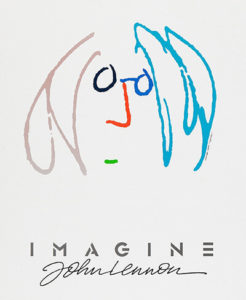
In optimism, and with deep love and gratitude, my brothers and sisters, I close and leave you with one more piece of profound beauty, encouragement and love from the great, great Maya Angelou.
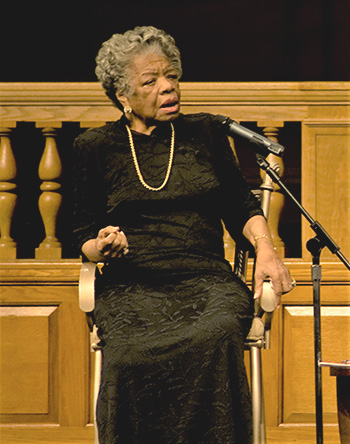
Continue
– Maya Angelou –
Into a world which needed you
My wish for you
Is that you continue
Continue
To be who and how you are
To astonish a mean world
With your acts of kindness
Continue
To allow humor to lighten the burden
of your tender heart
Continue
In a society dark with cruelty
To let the people hear the grandeur
Of God in the peals of your laughter
Continue
To let your eloquence
Elevate the people to heights
They had only imagined
Continue
To remind the people that
Each is as good as the other
And that no one is beneath
Nor above you
Continue
To remember your own young years
And look with favor upon the lost
And the least and the lonely
Continue
To put the mantle of your protection
Around the bodies of
The young and defenseless
Continue
To take the hand of the despised
And diseased and walk proudly with them
In the high street
Some might see you and
Be encouraged to do likewise
Continue
To plant a public kiss of concern
On the cheek of the sick
And the aged and infirm
And count that as a
Natural action to be expected
Continue
To let gratitude be the pillow
Upon which you kneel to
Say your nightly prayer
And let faith be the bridge
You build to overcome evil
And welcome good
Continue
To ignore no vision
Which comes to enlarge your range
And increase your spirit
Continue
To dare to love deeply
And risk everything
For the good thing
Continue
To float
Happily in the sea of infinite substance
Which set aside riches for you
Before you had a name
Continue
And by doing so
You and your work
Will be able to continue
Eternally

